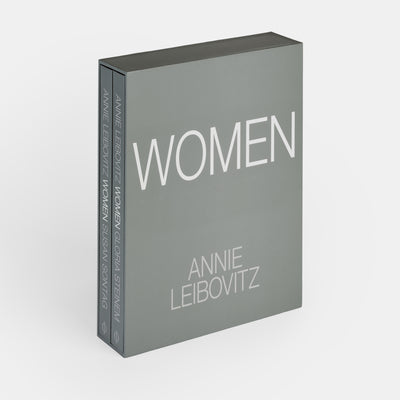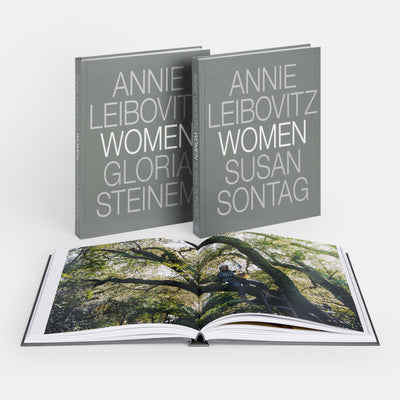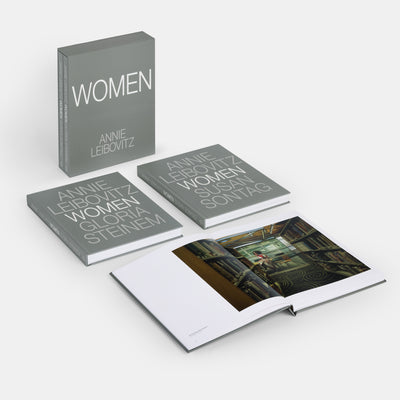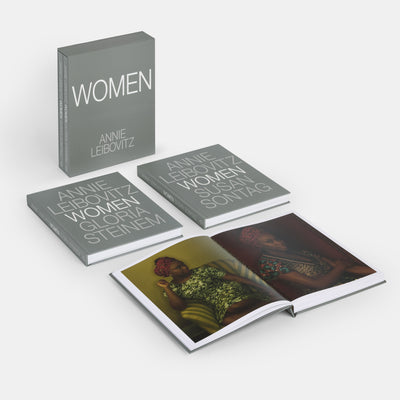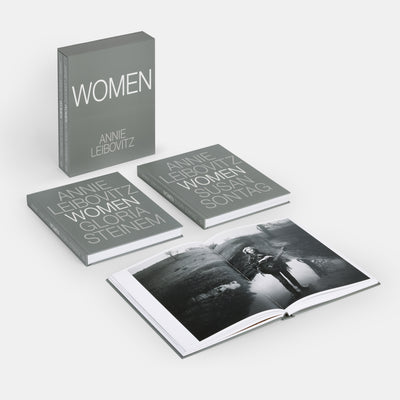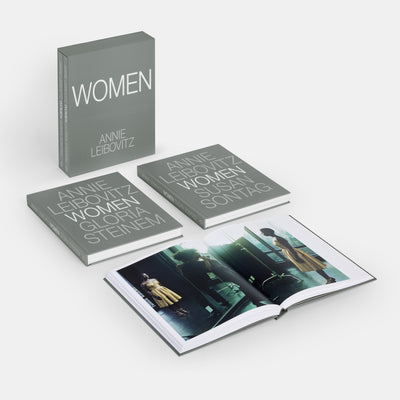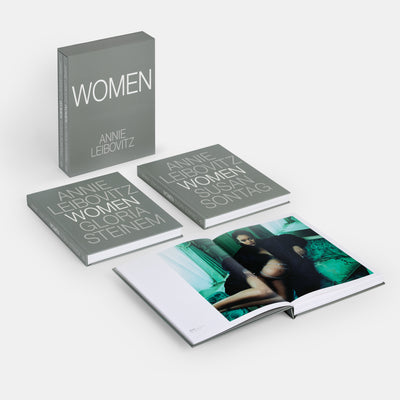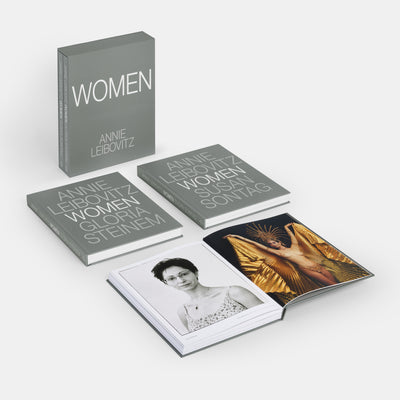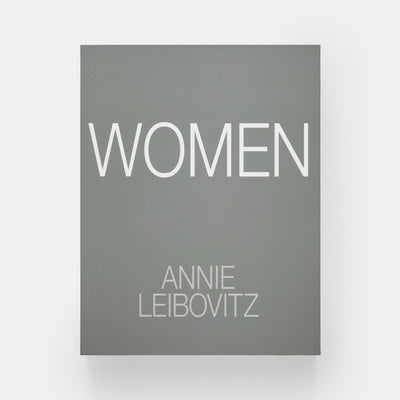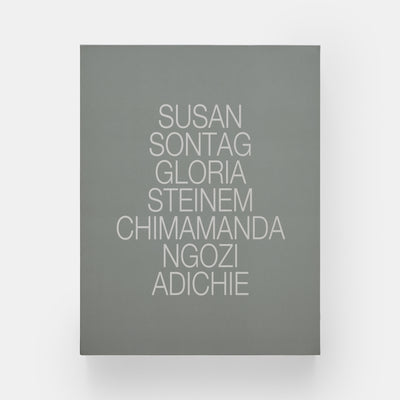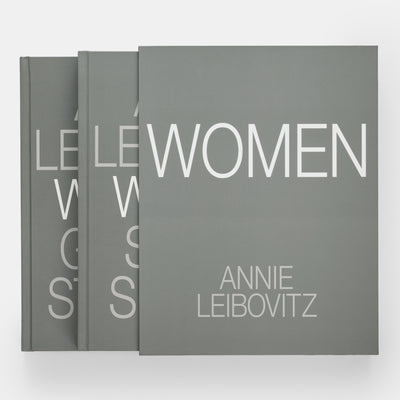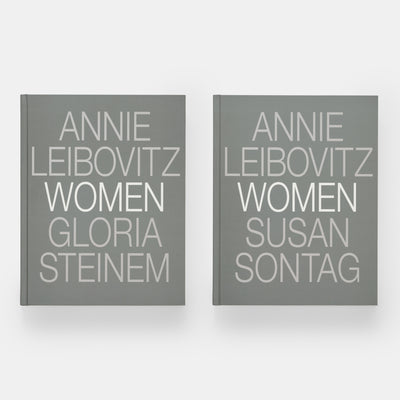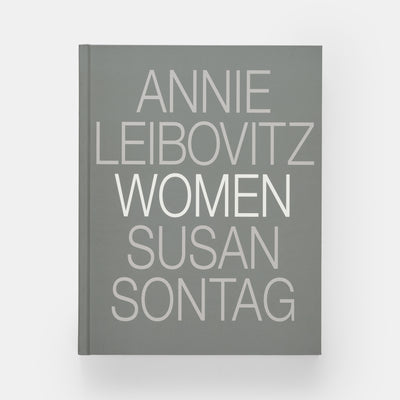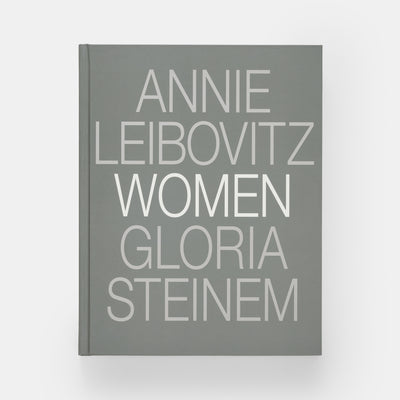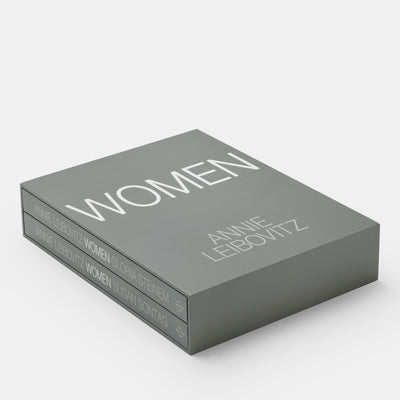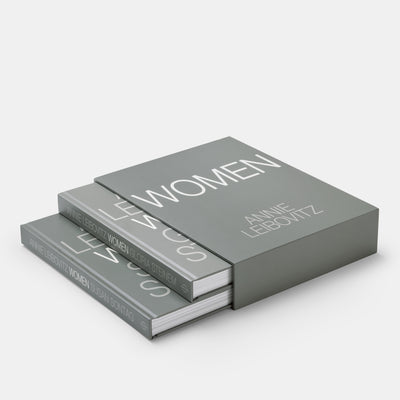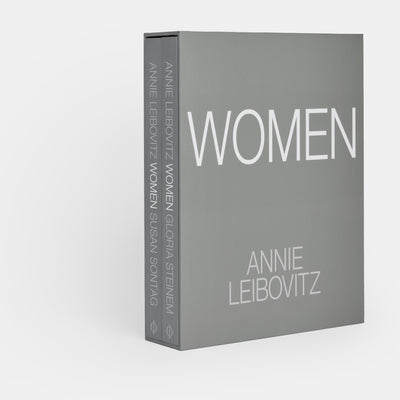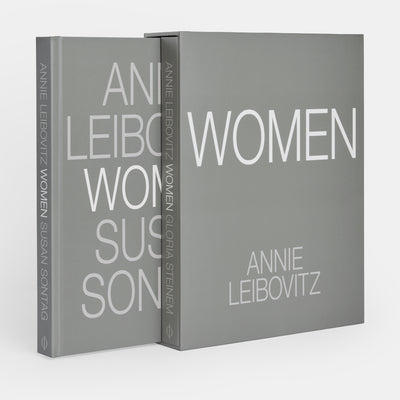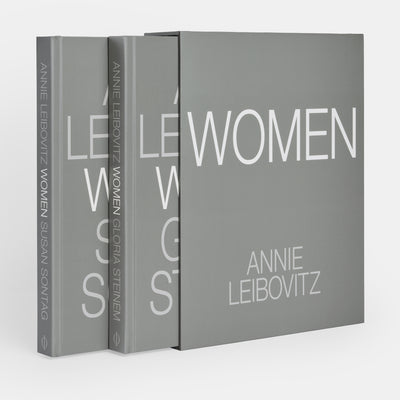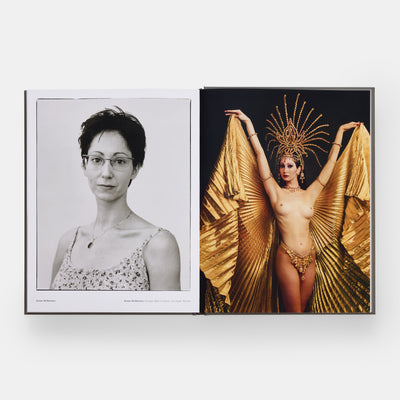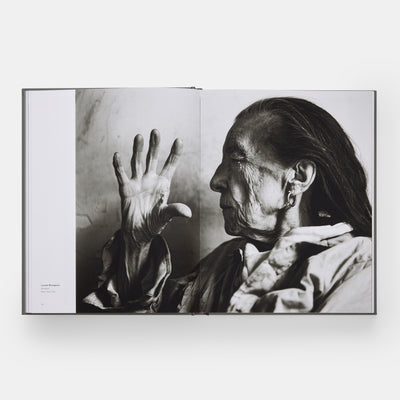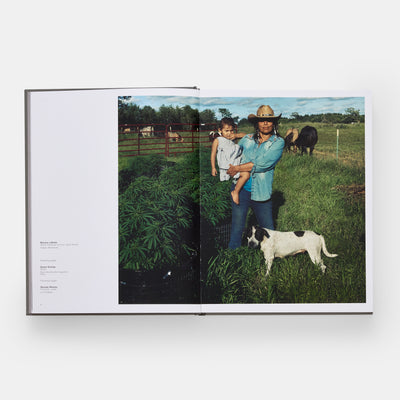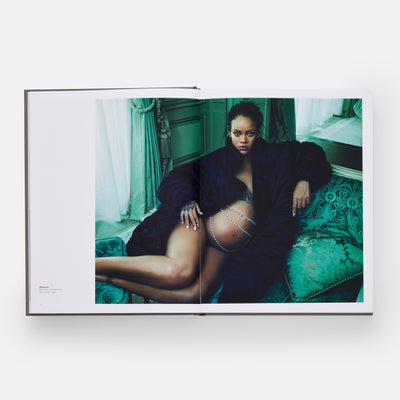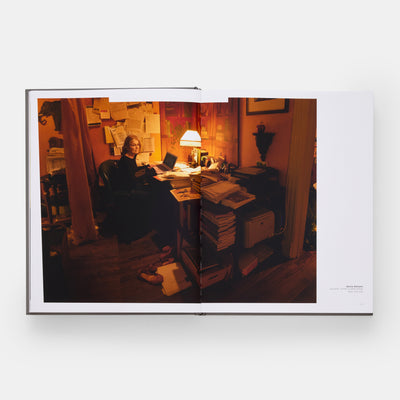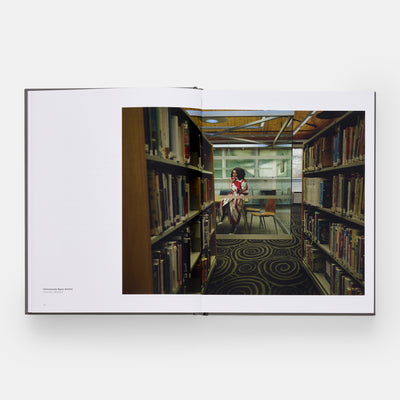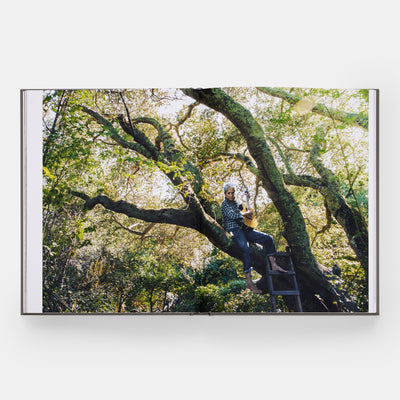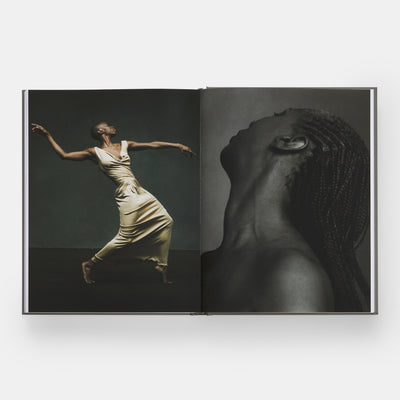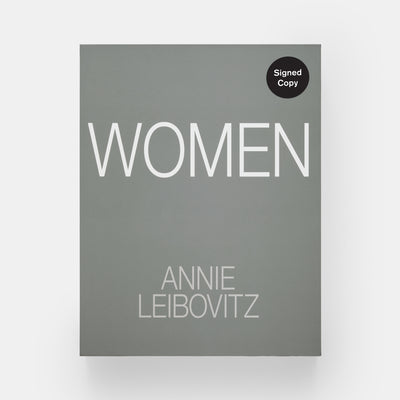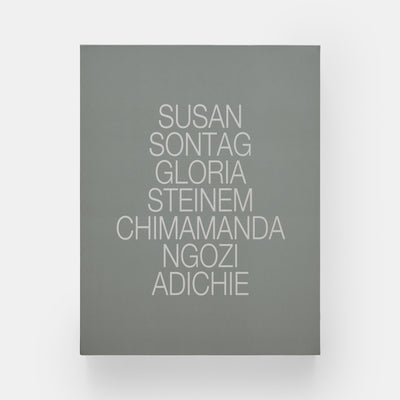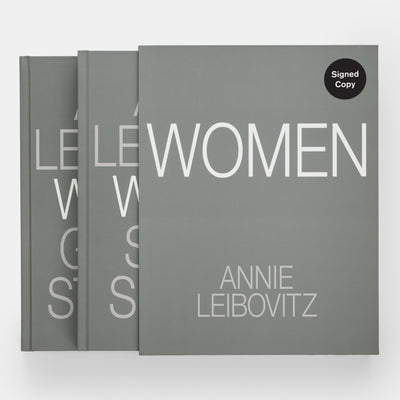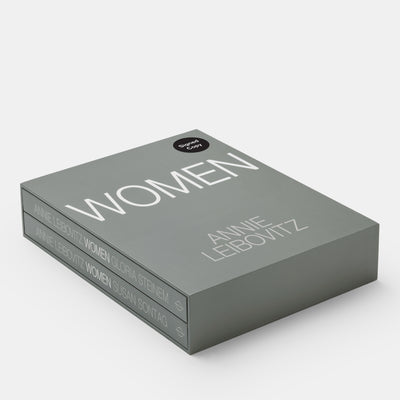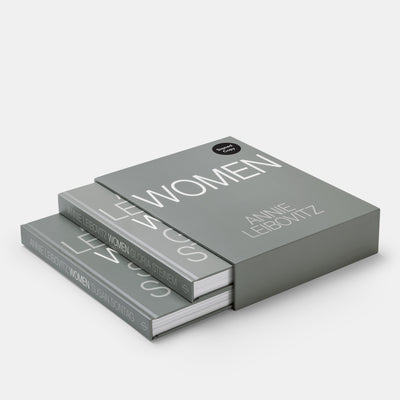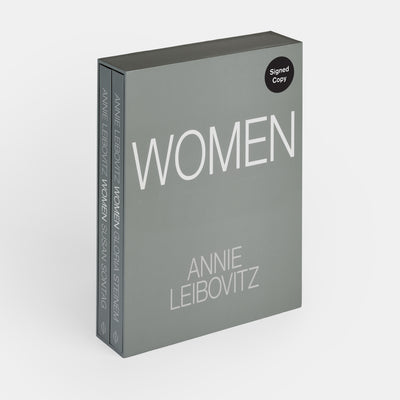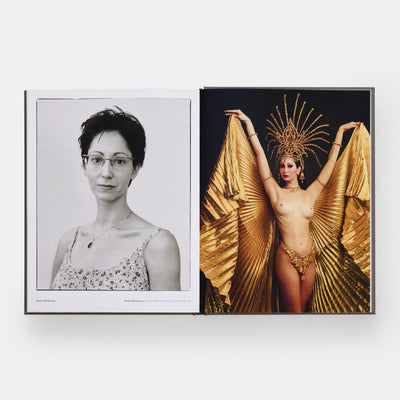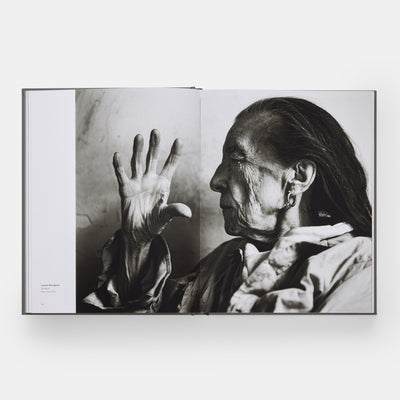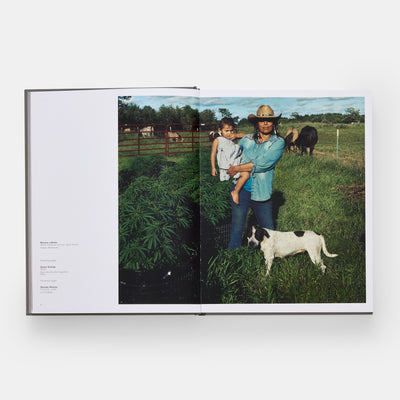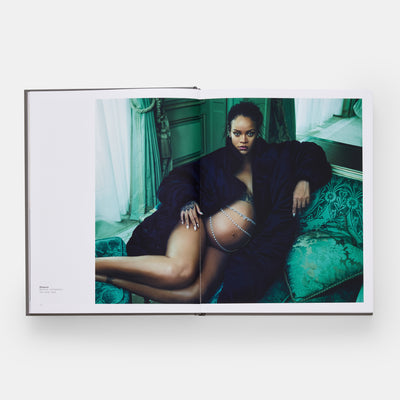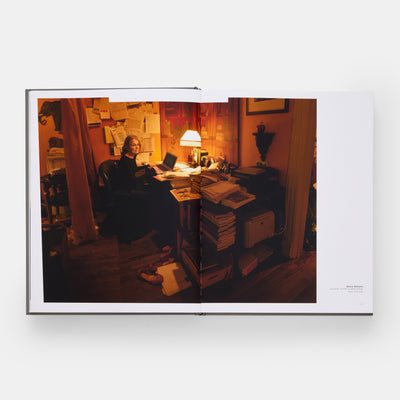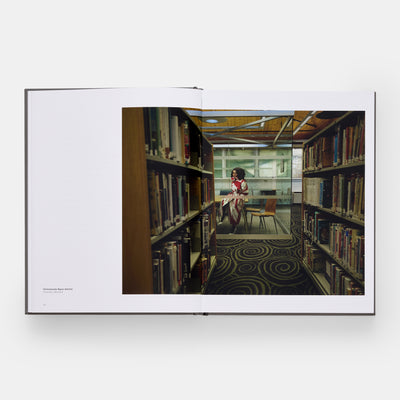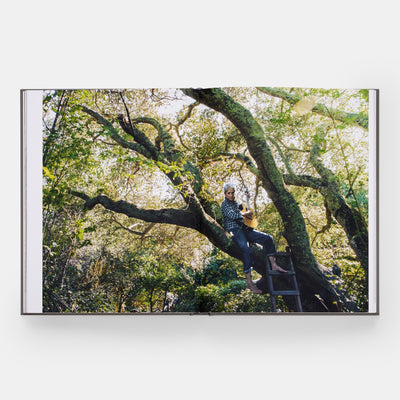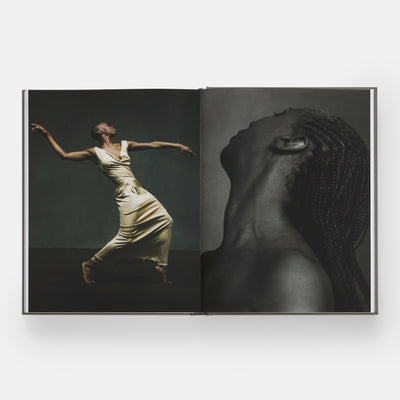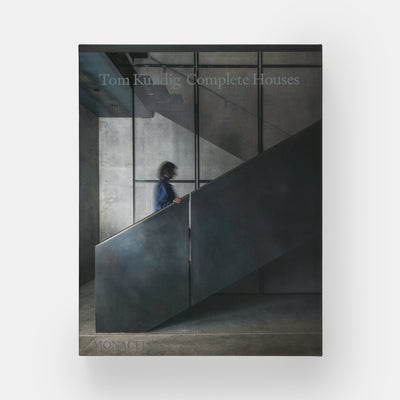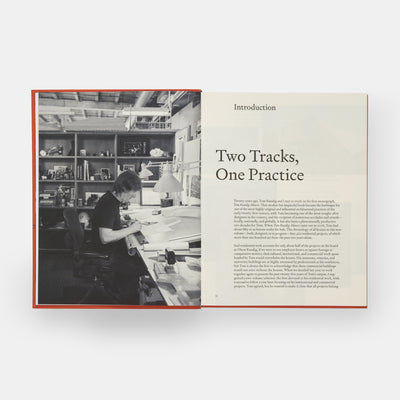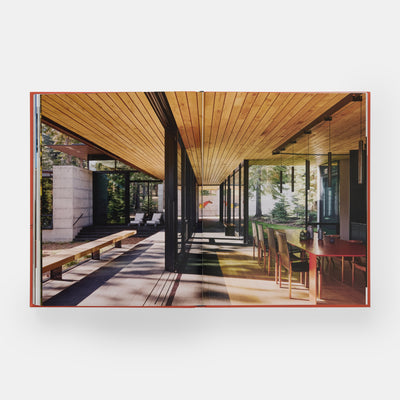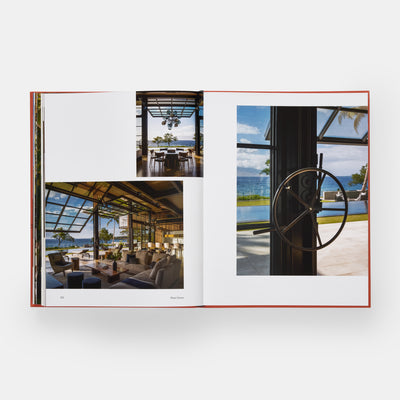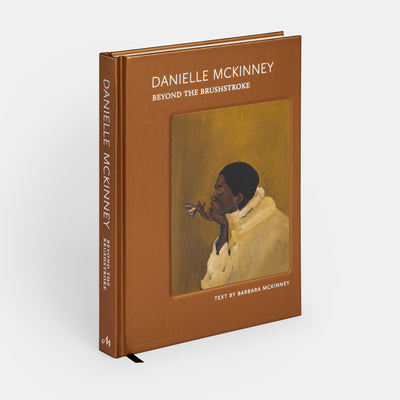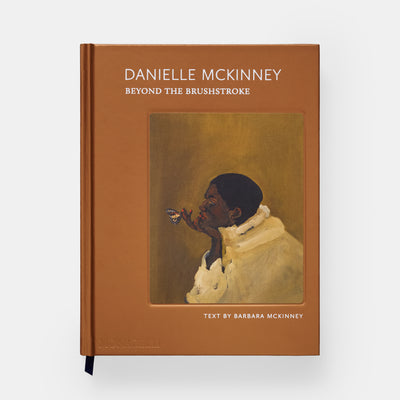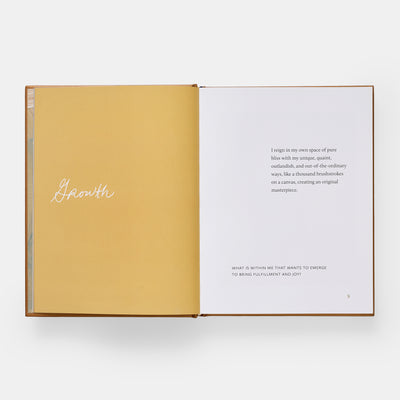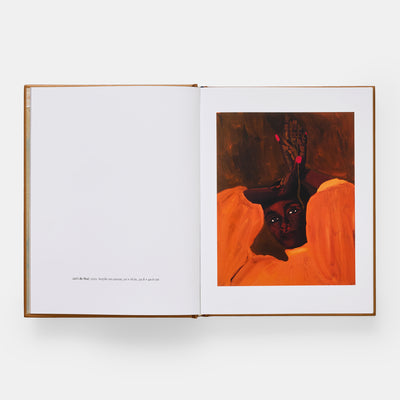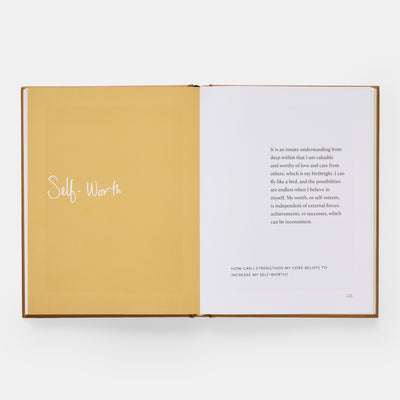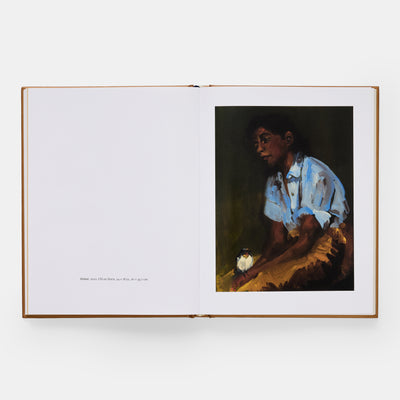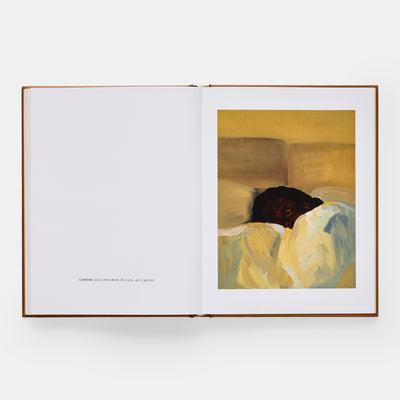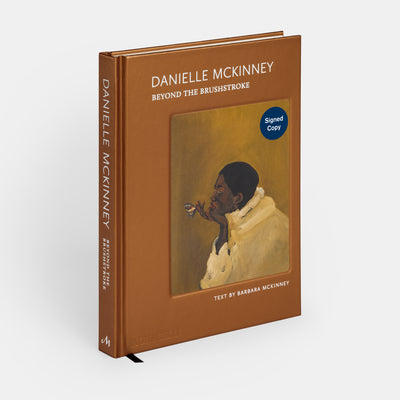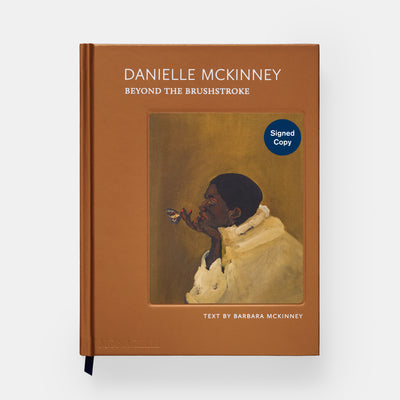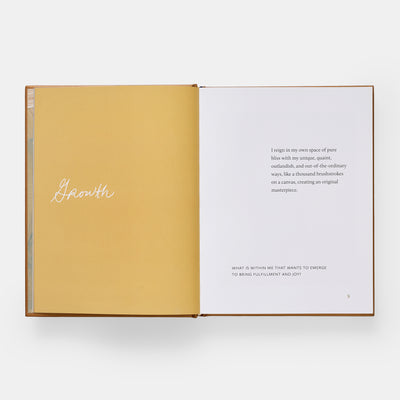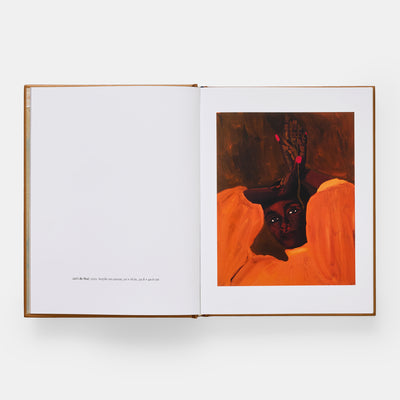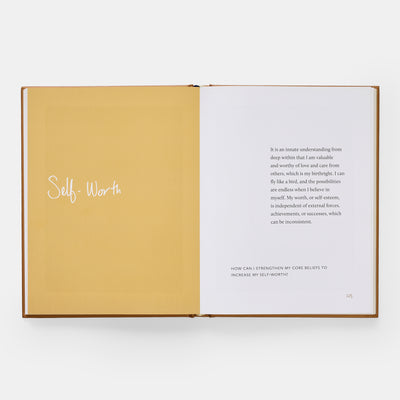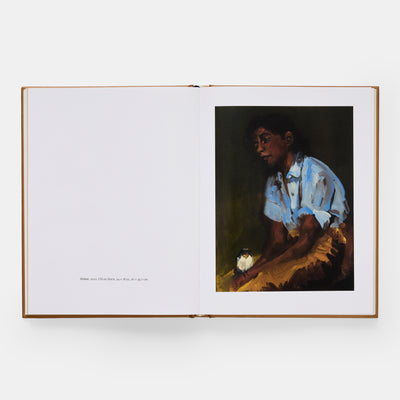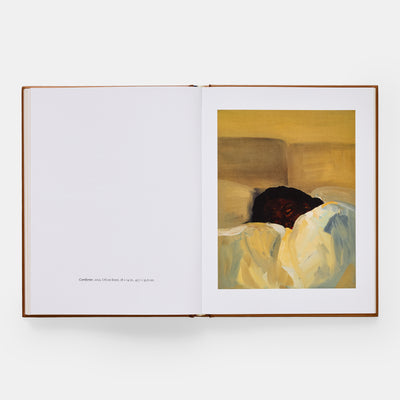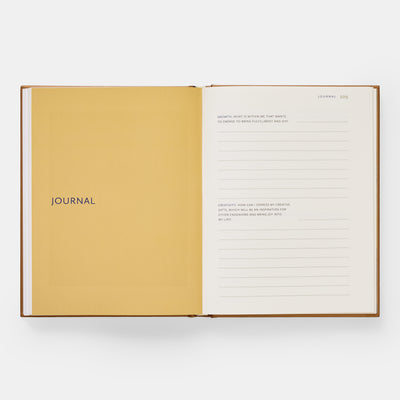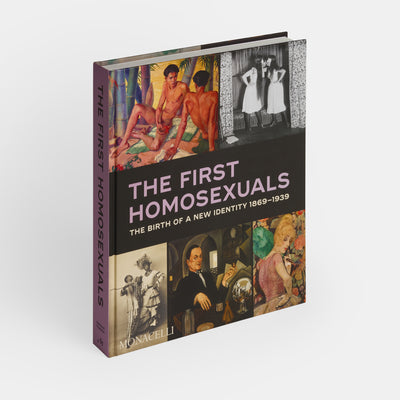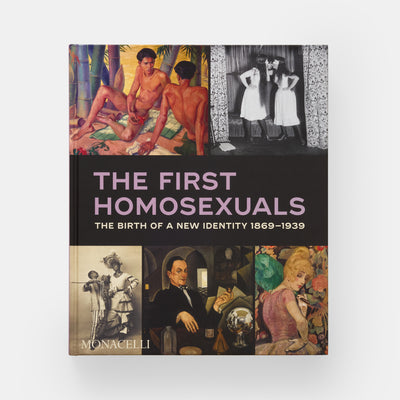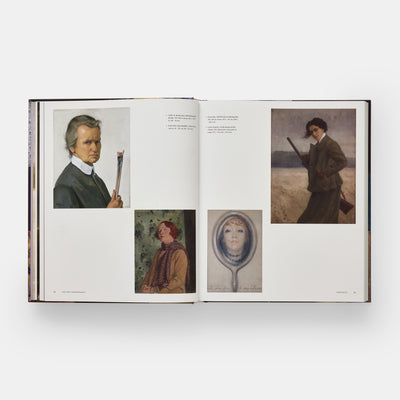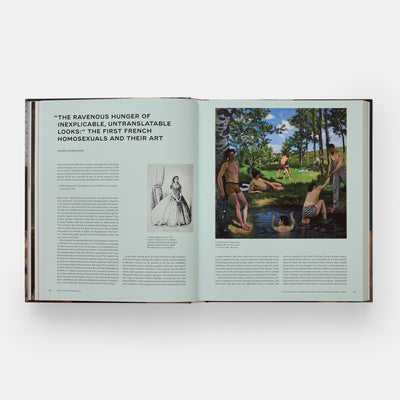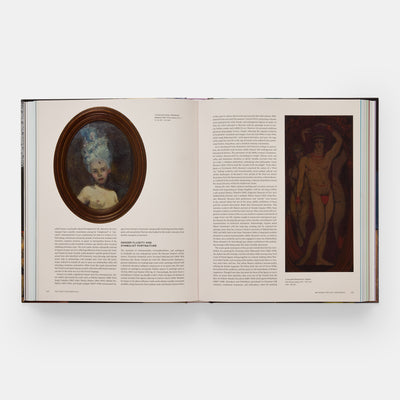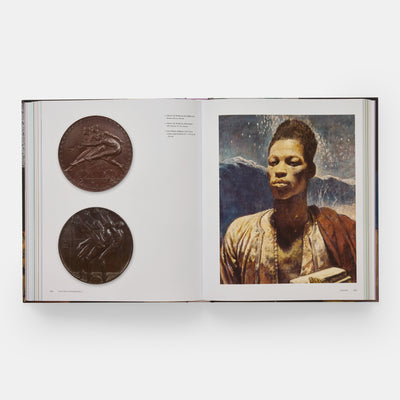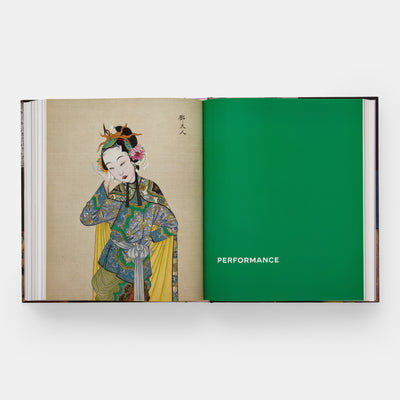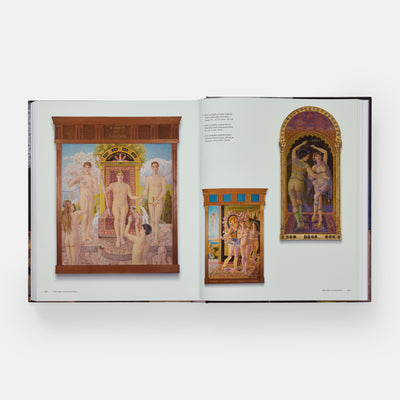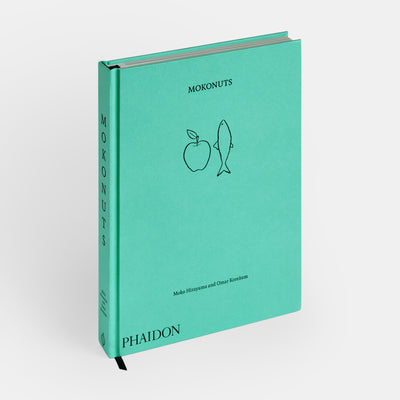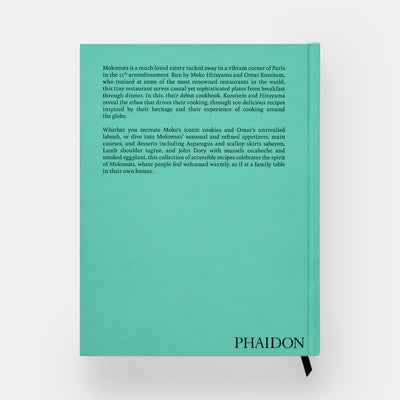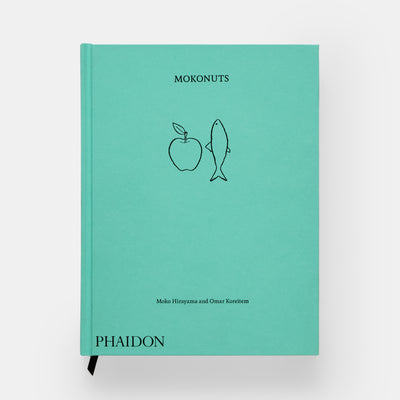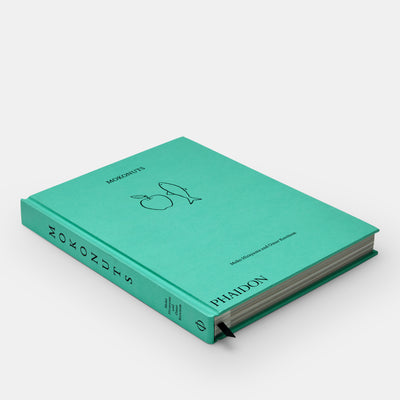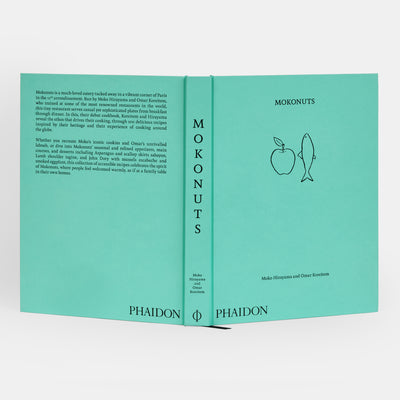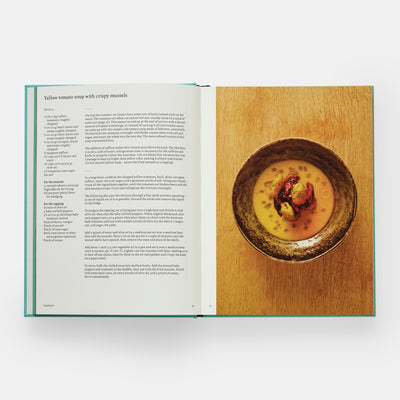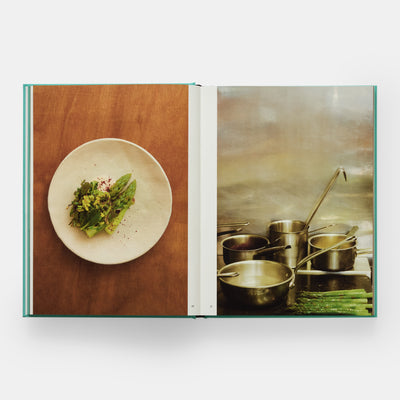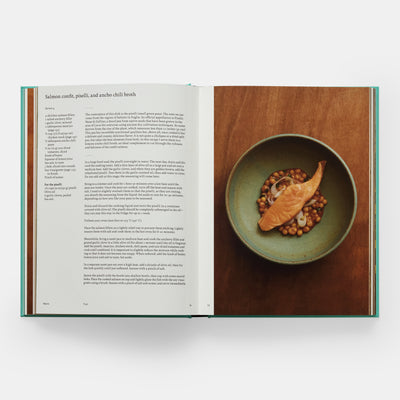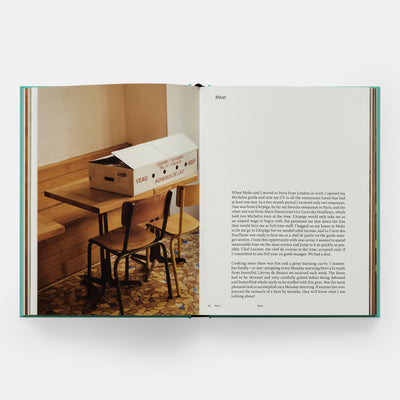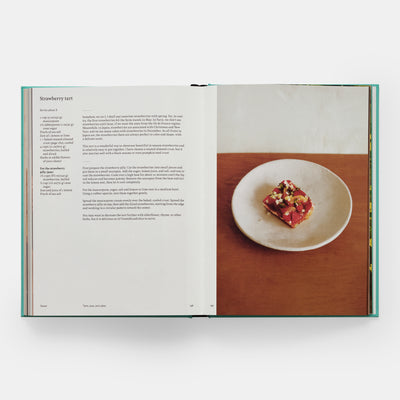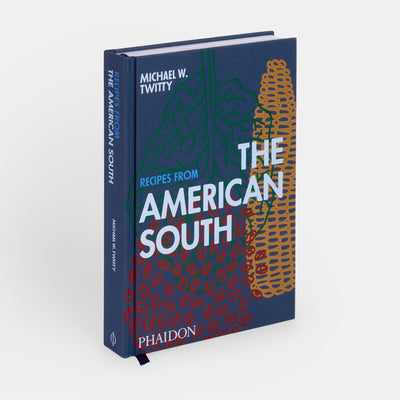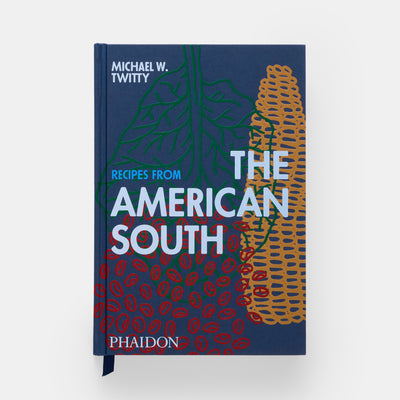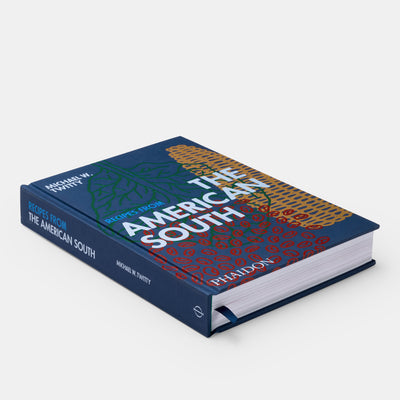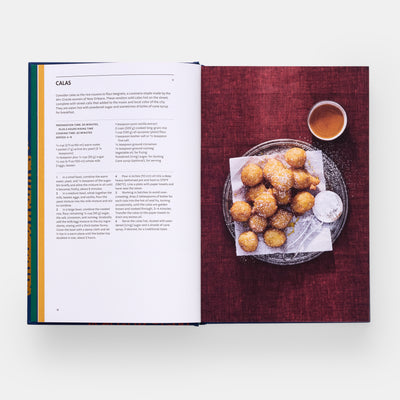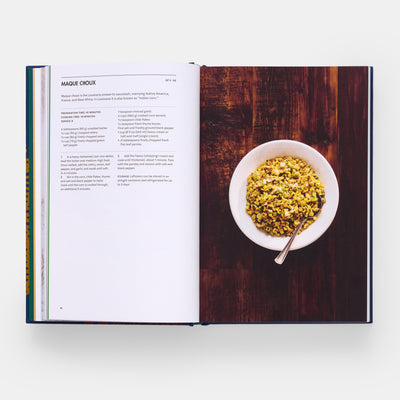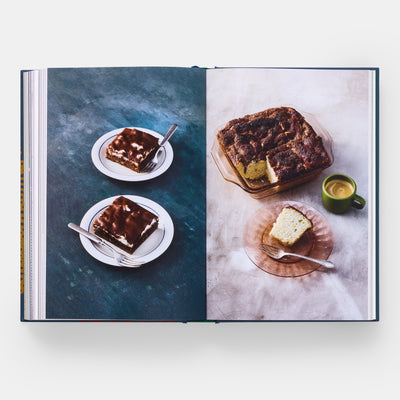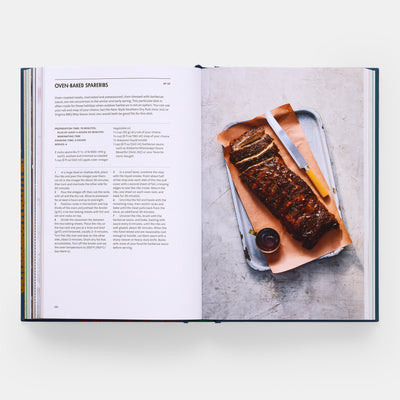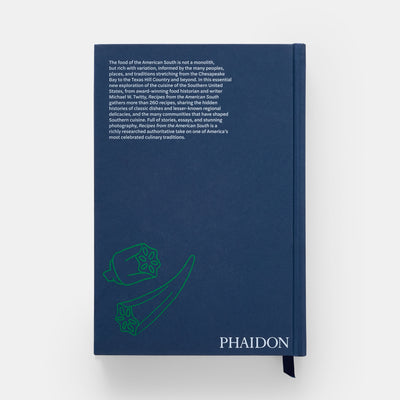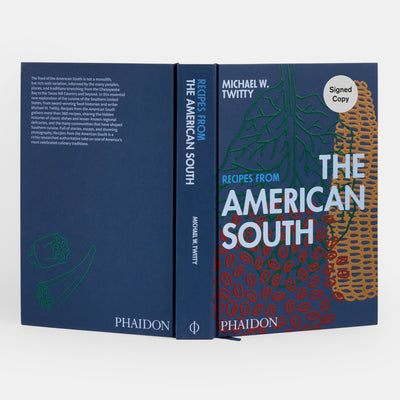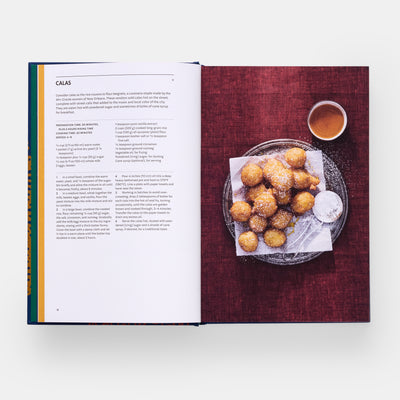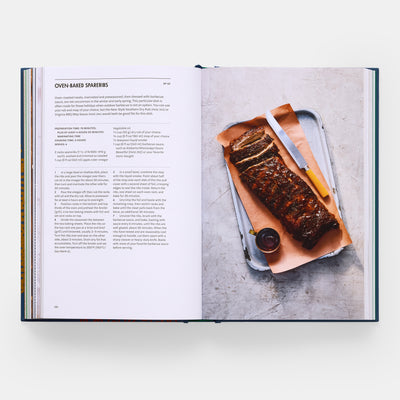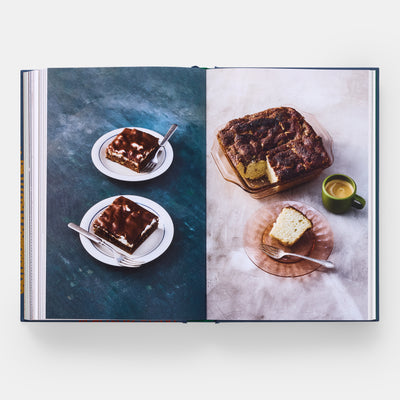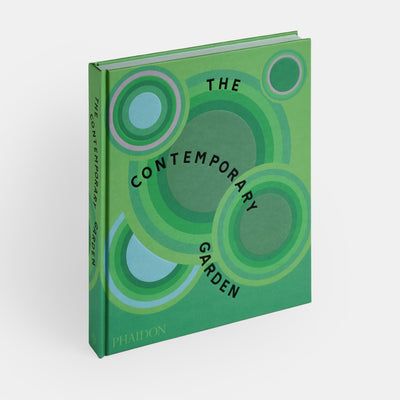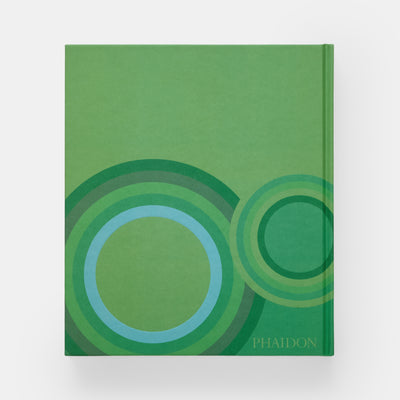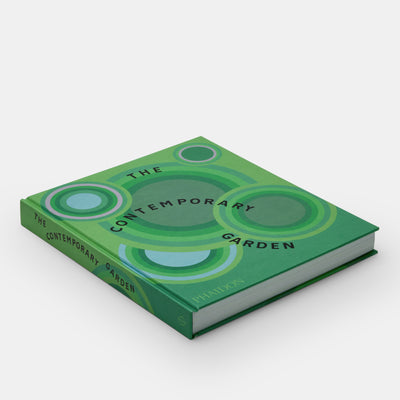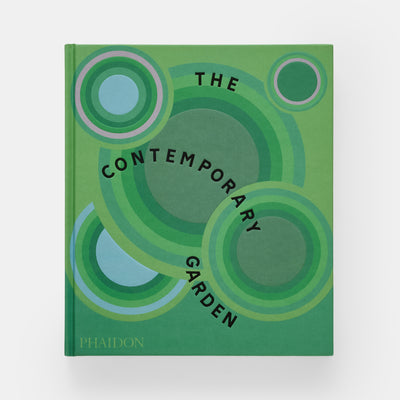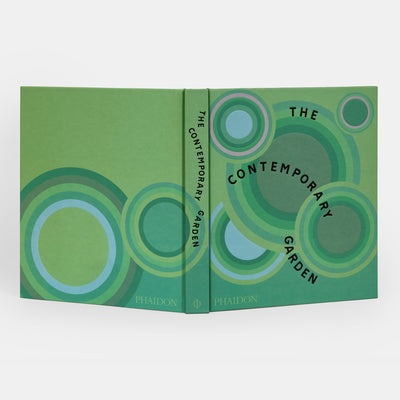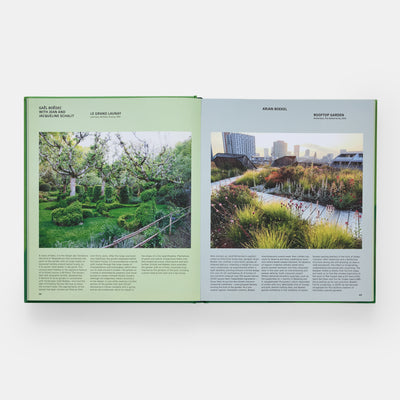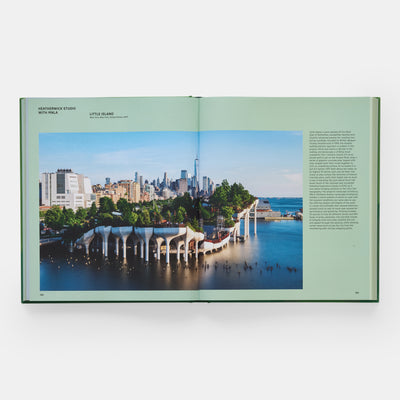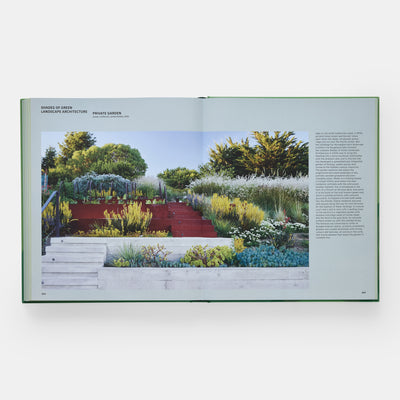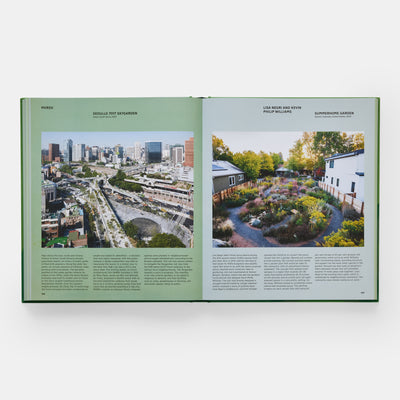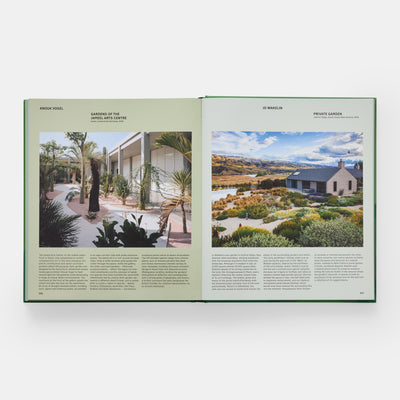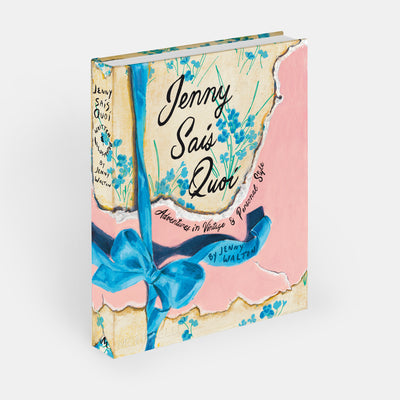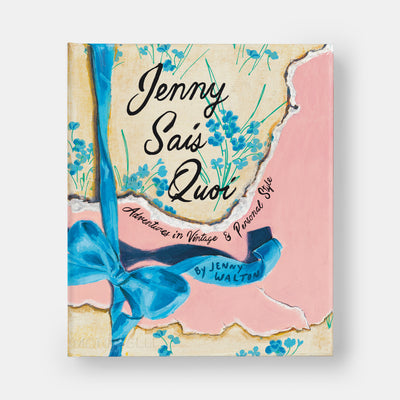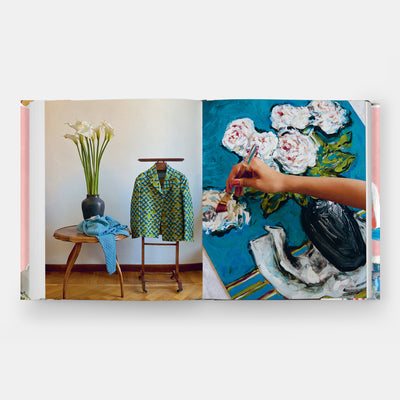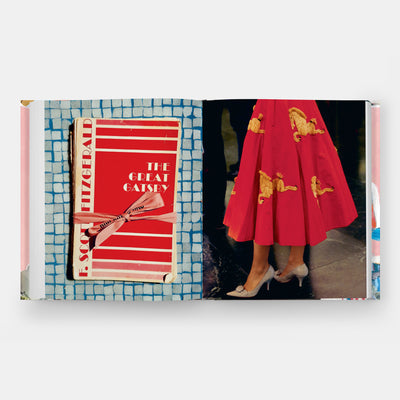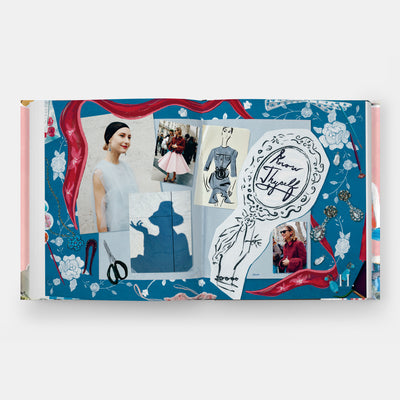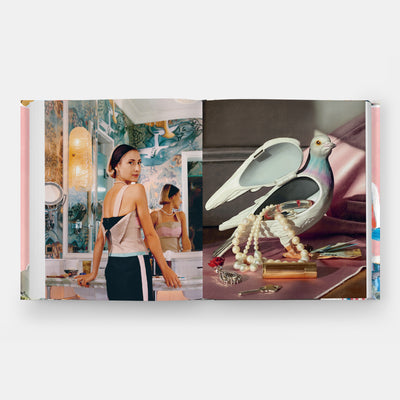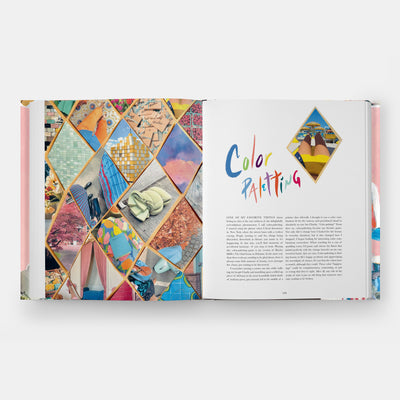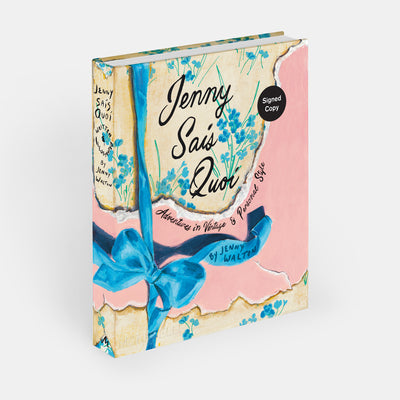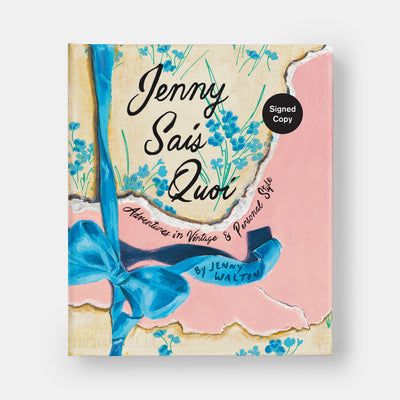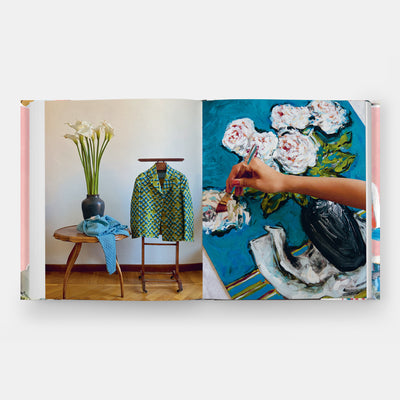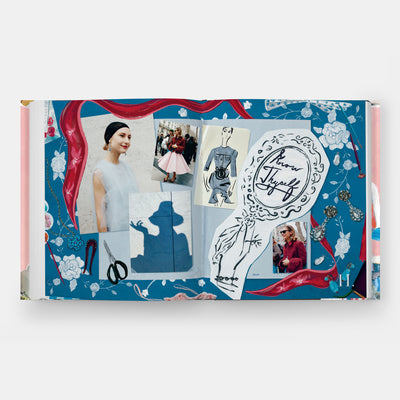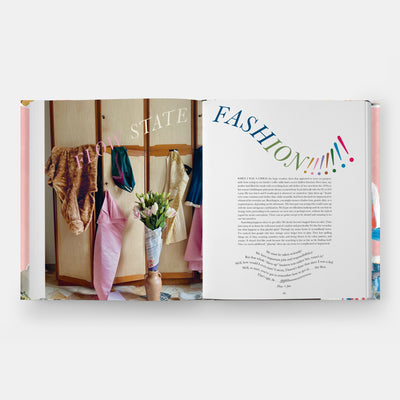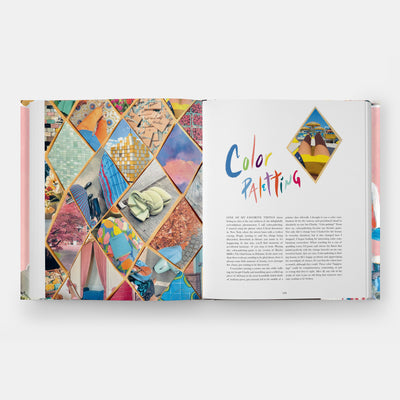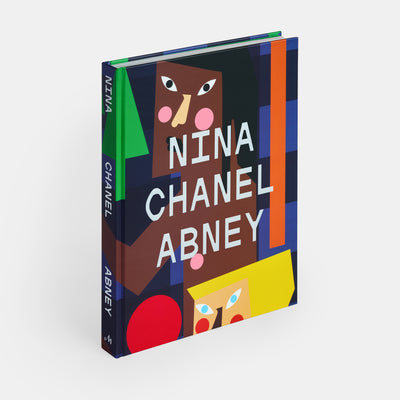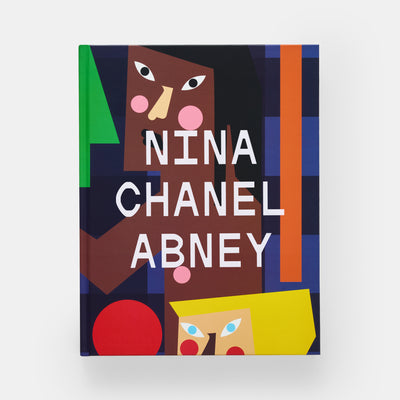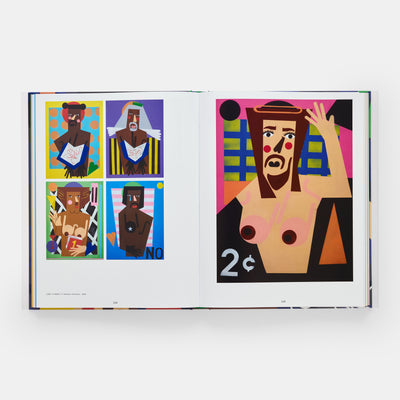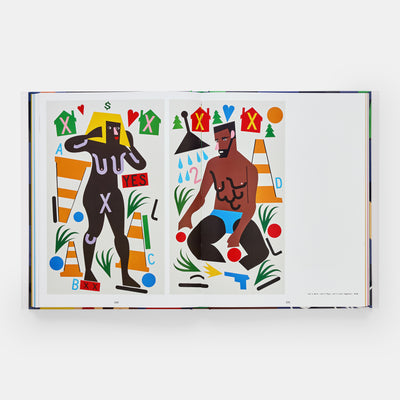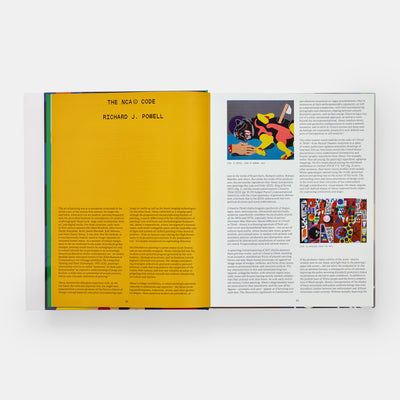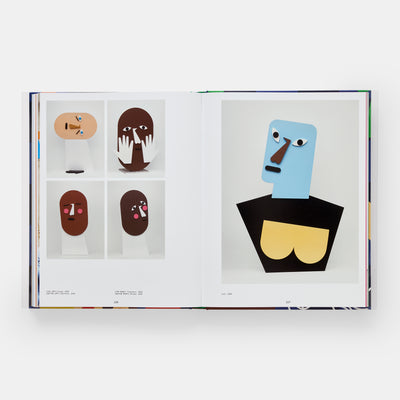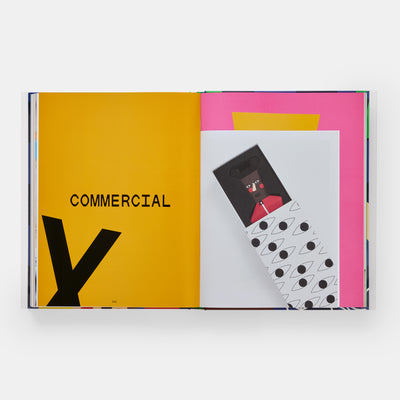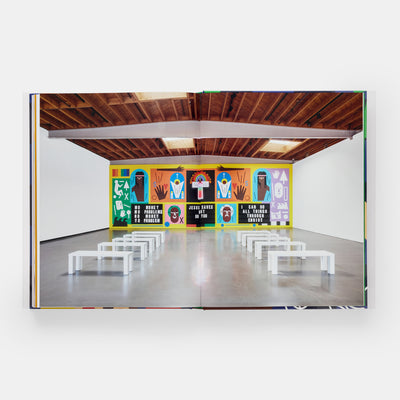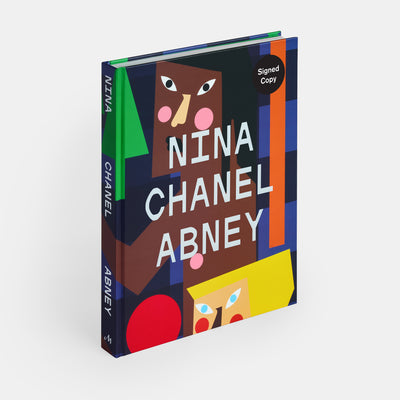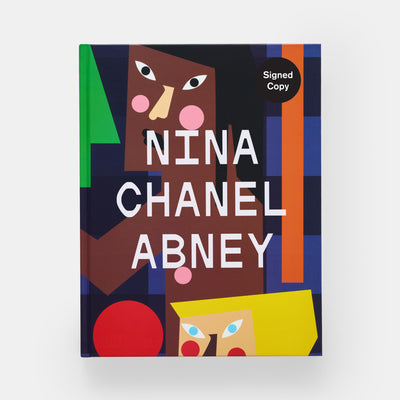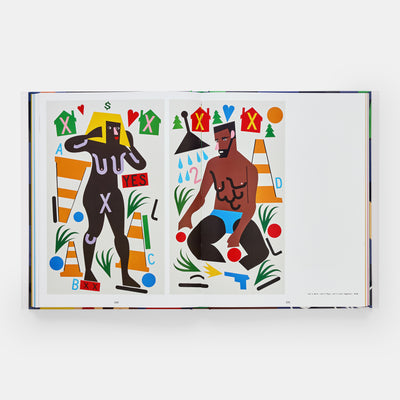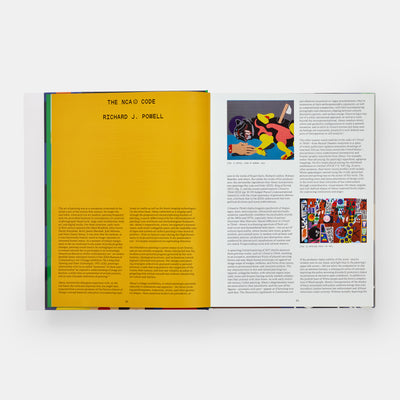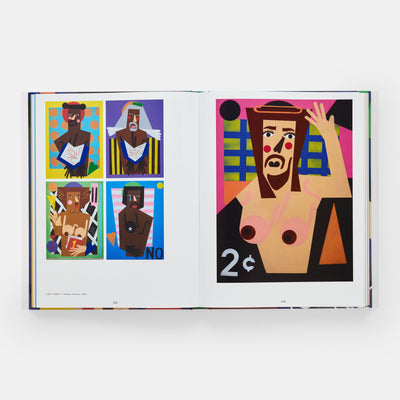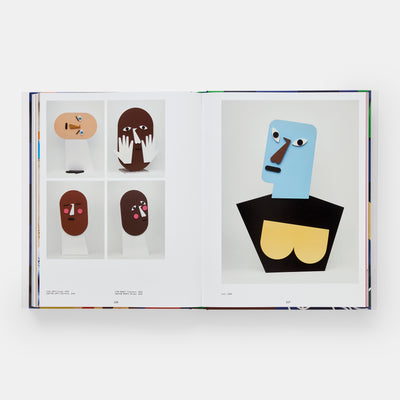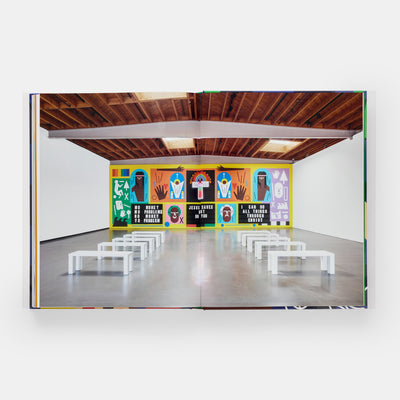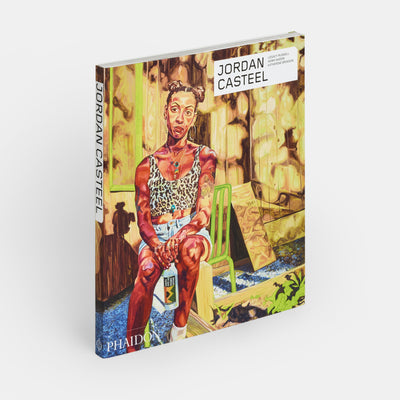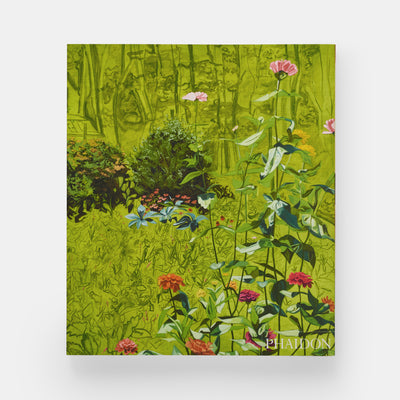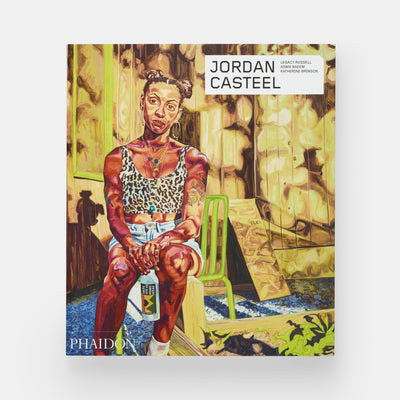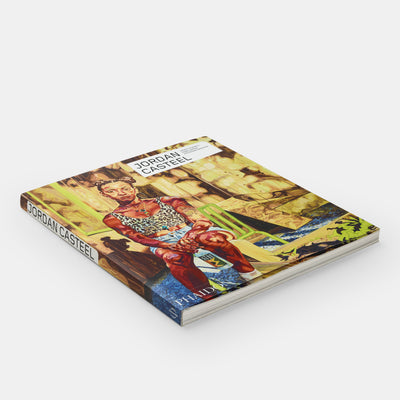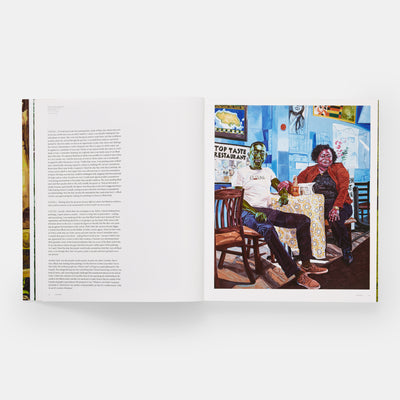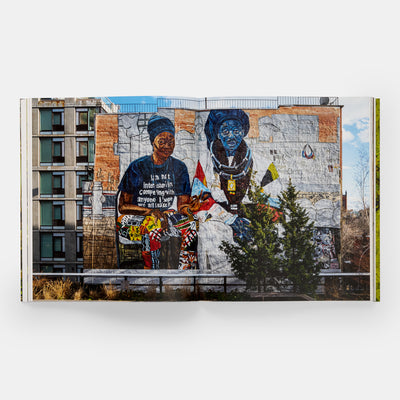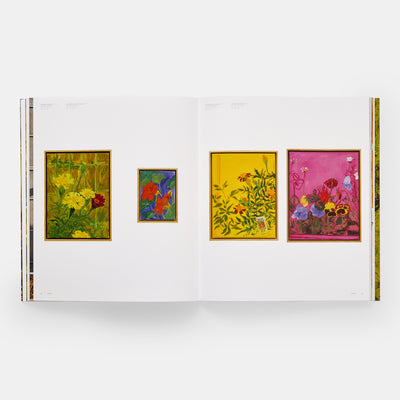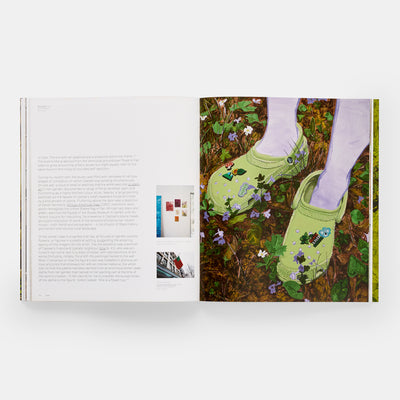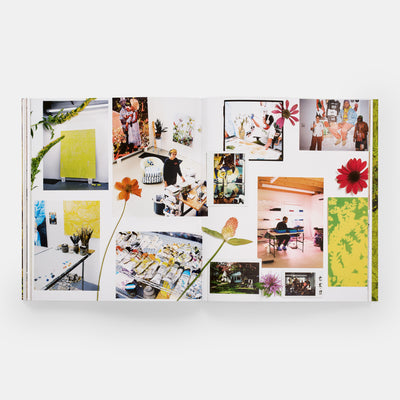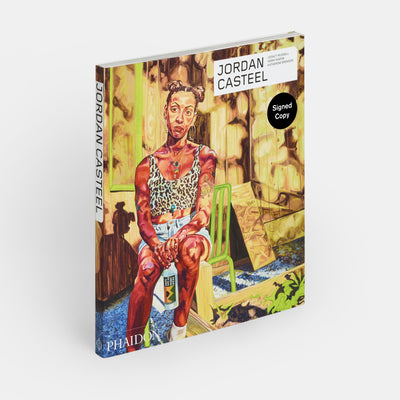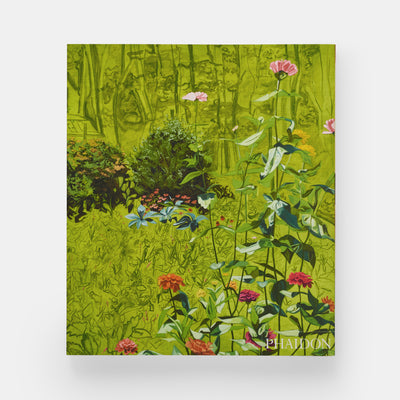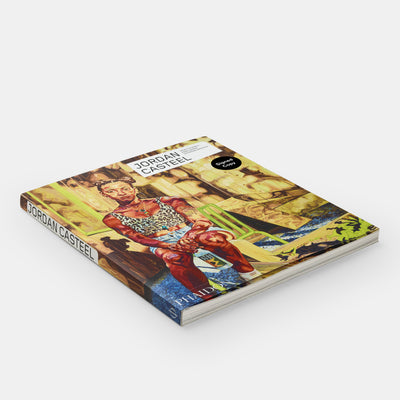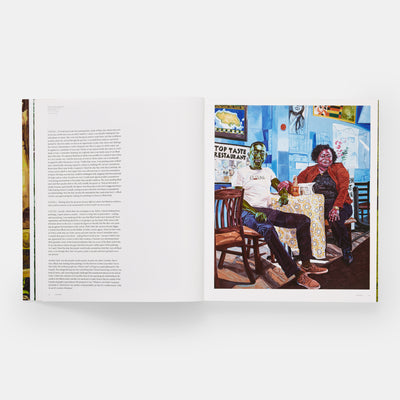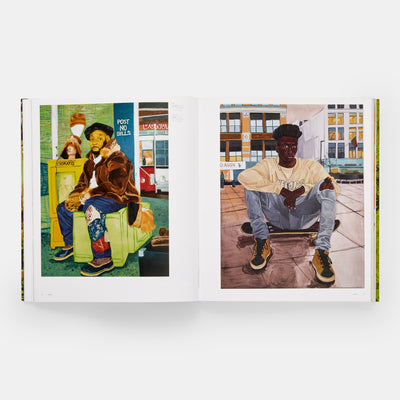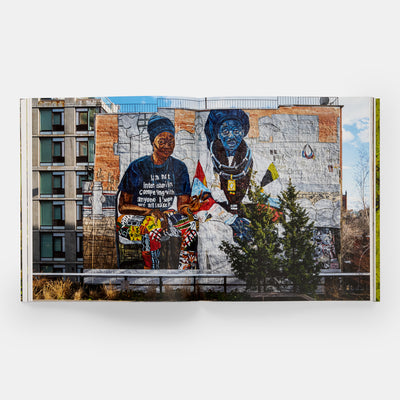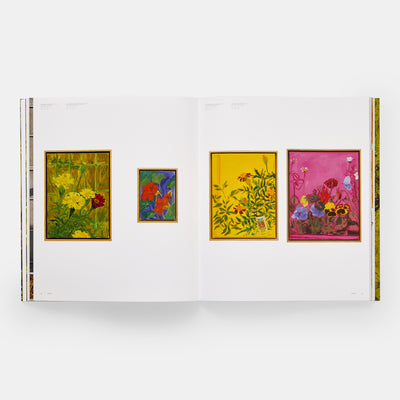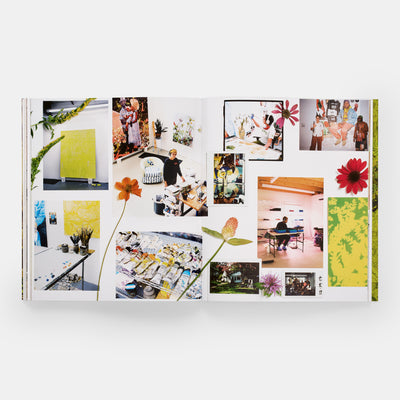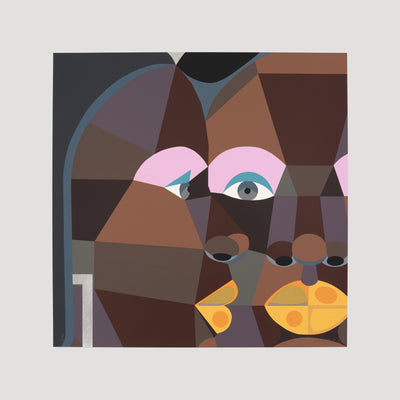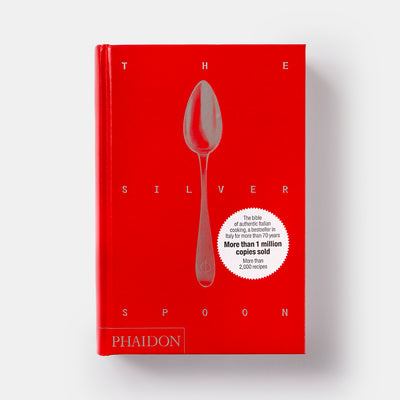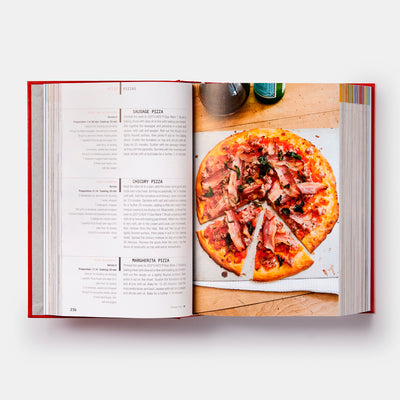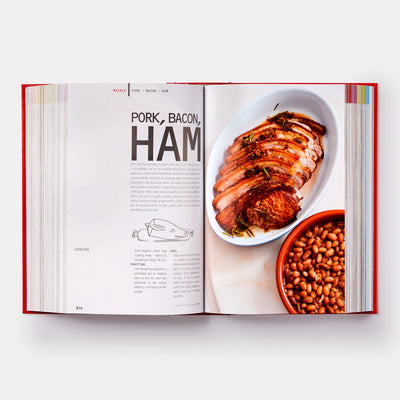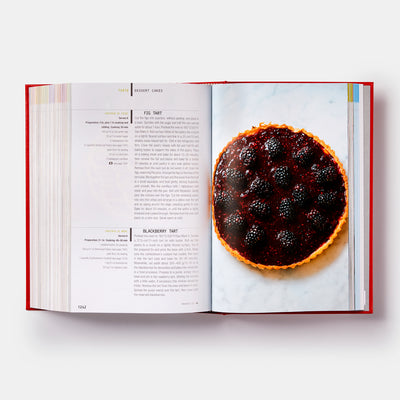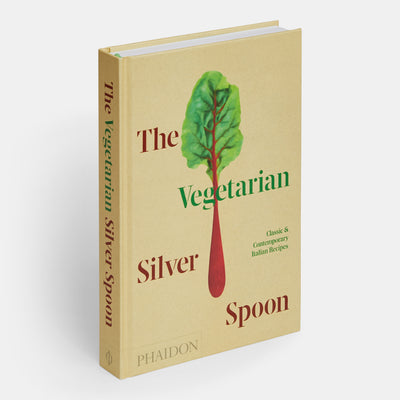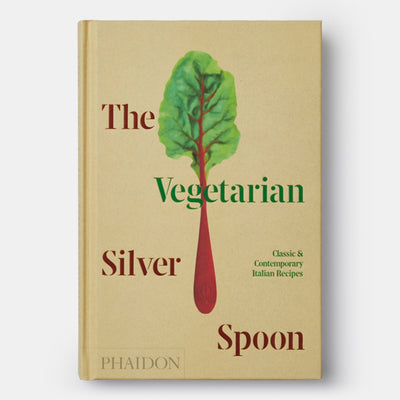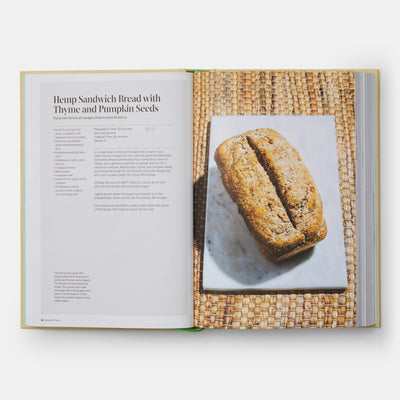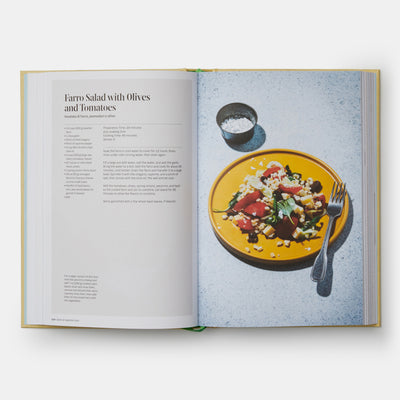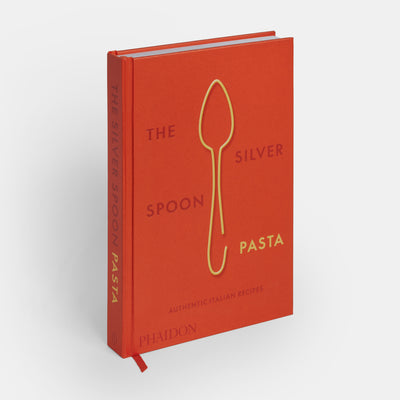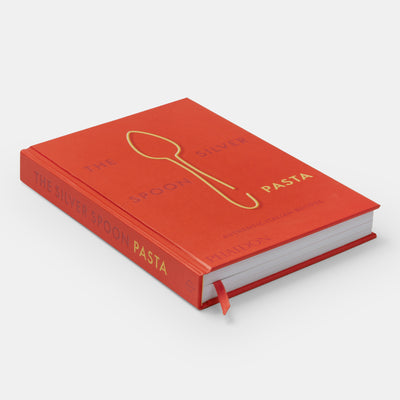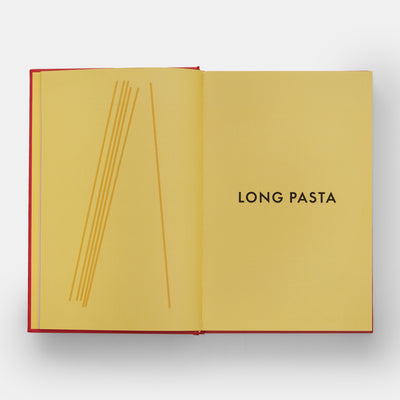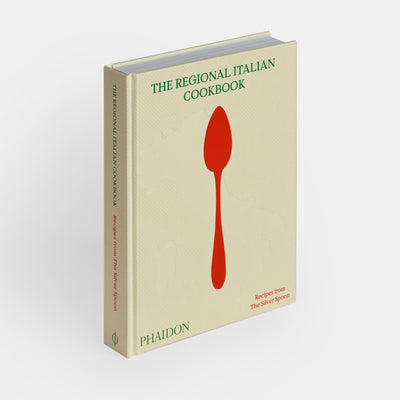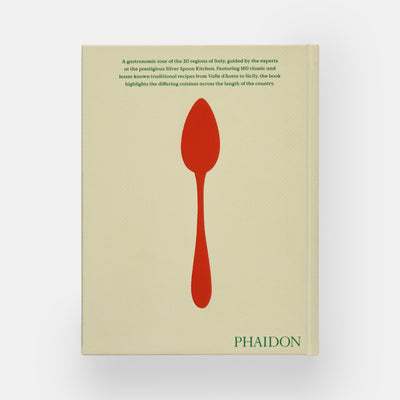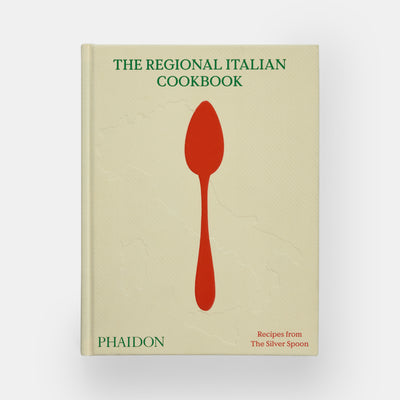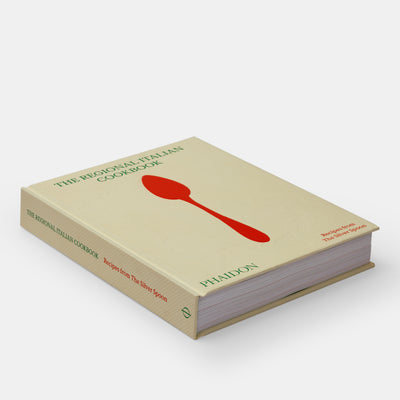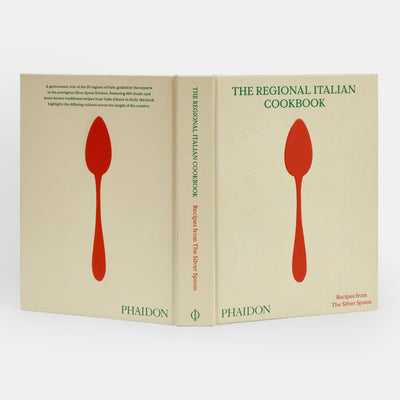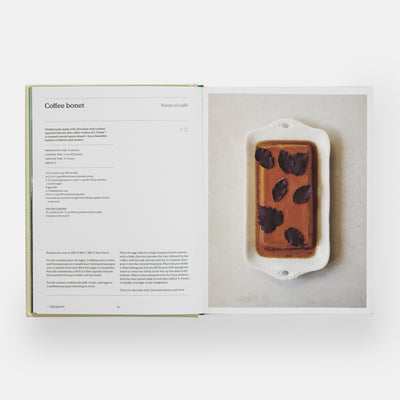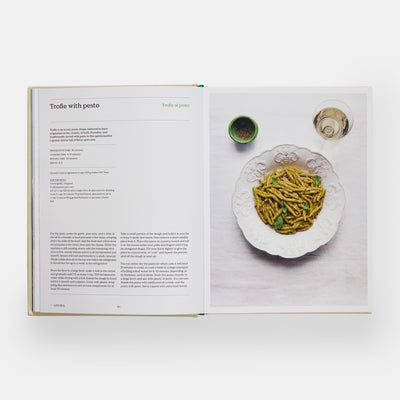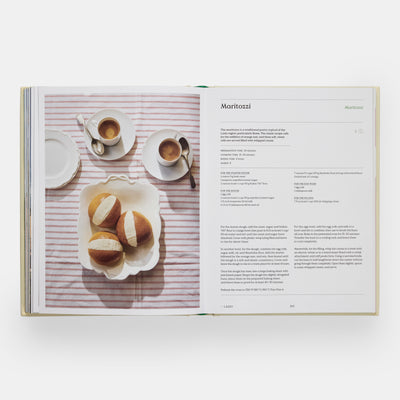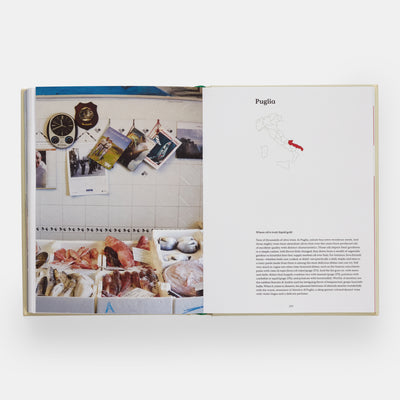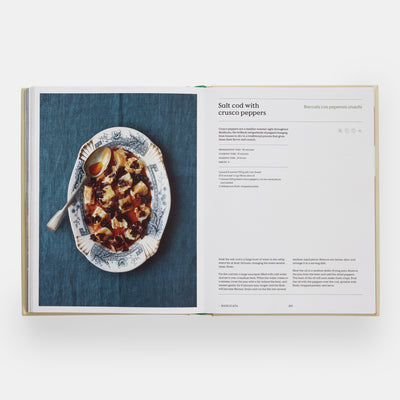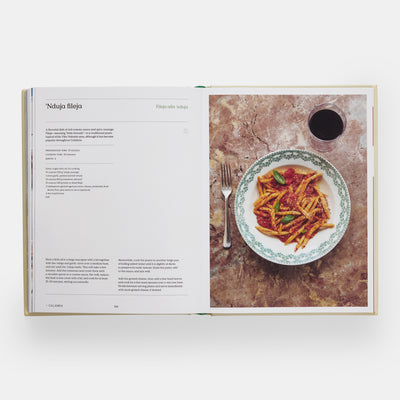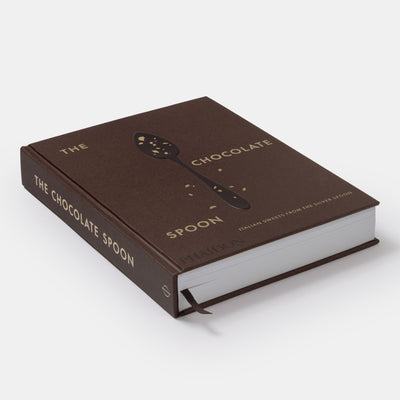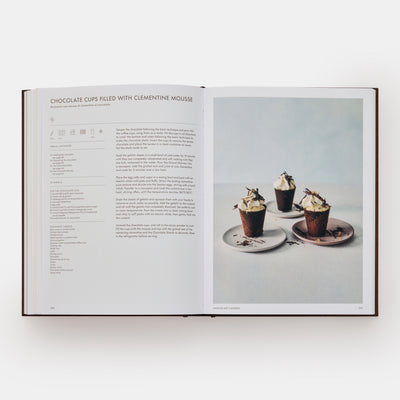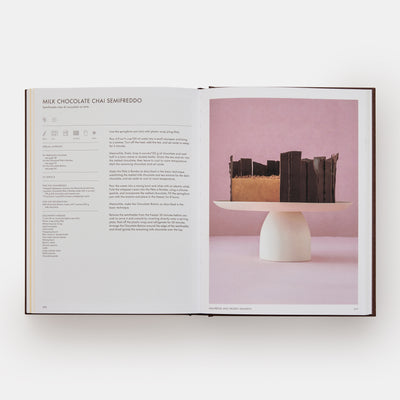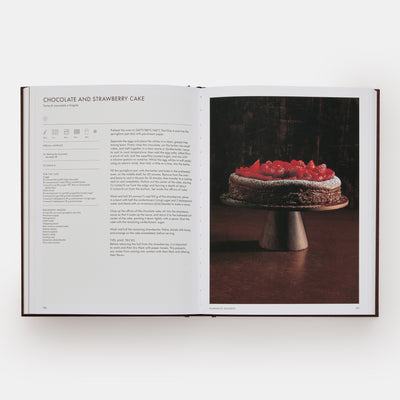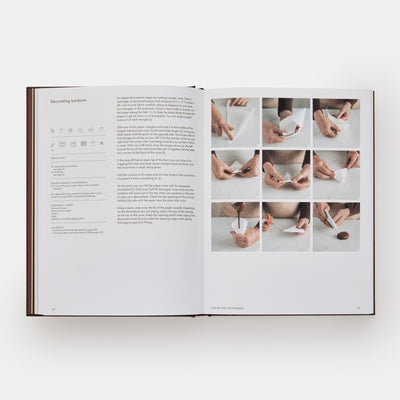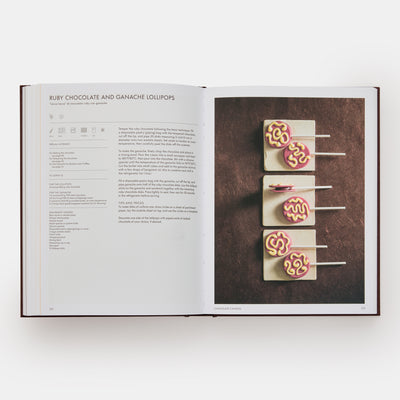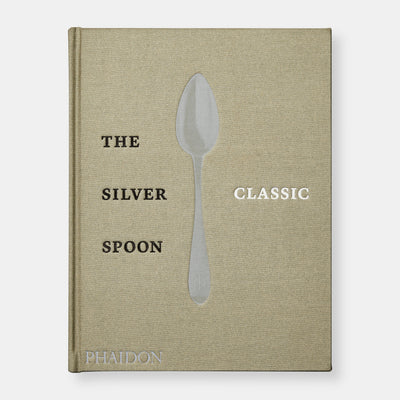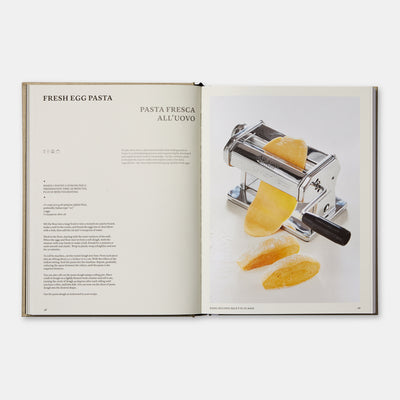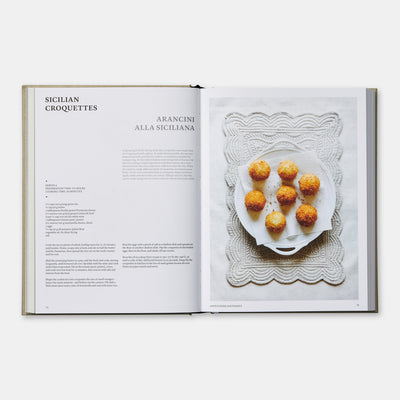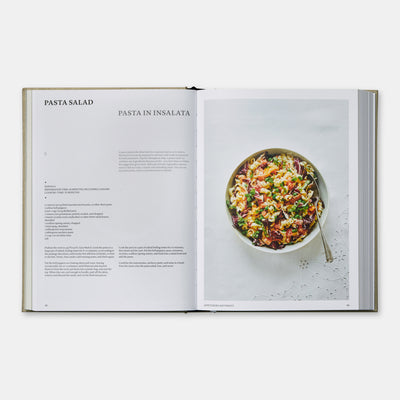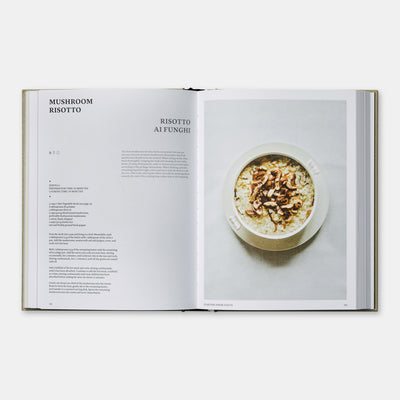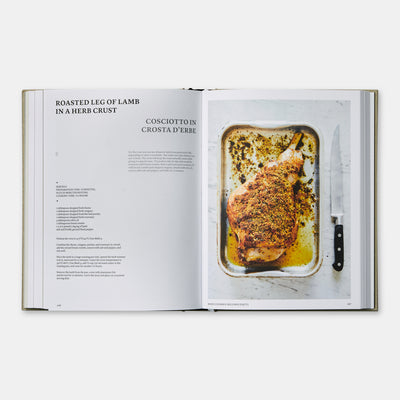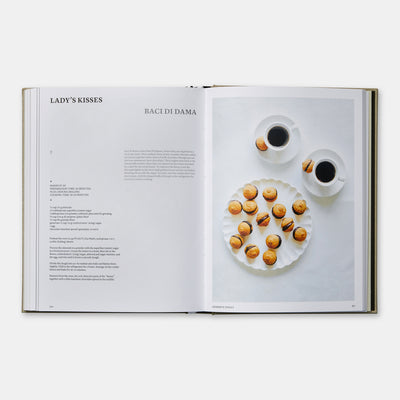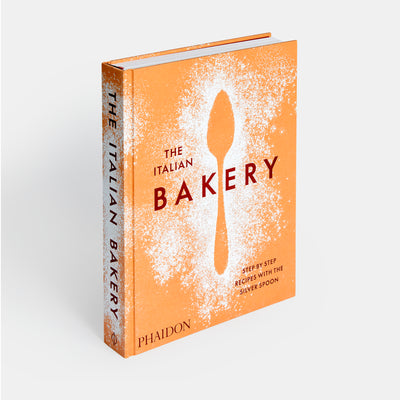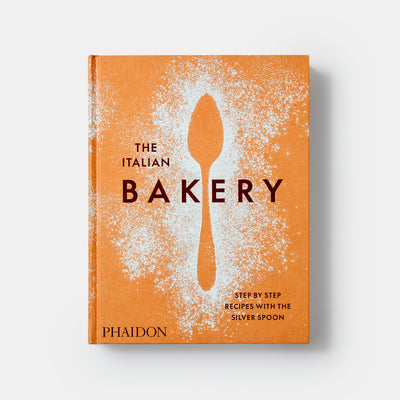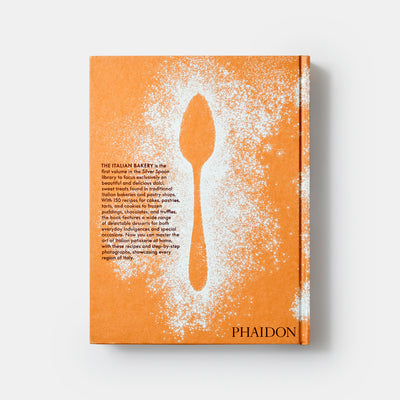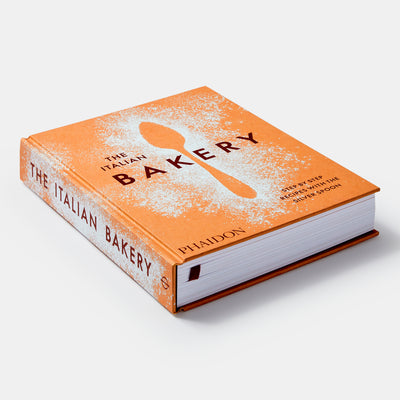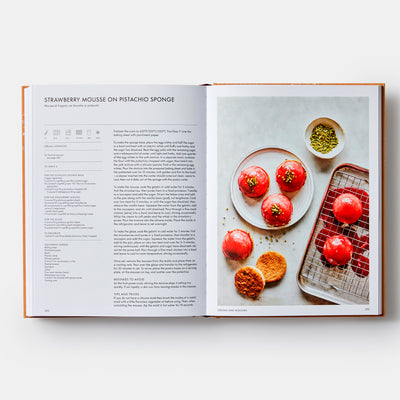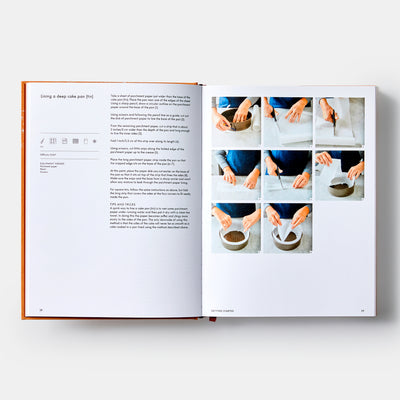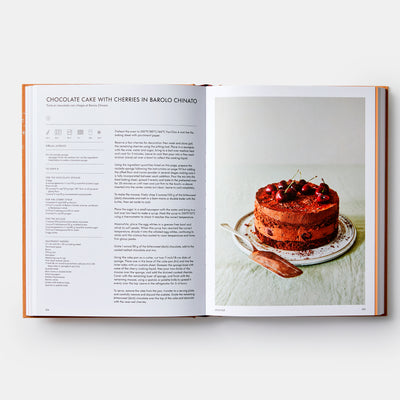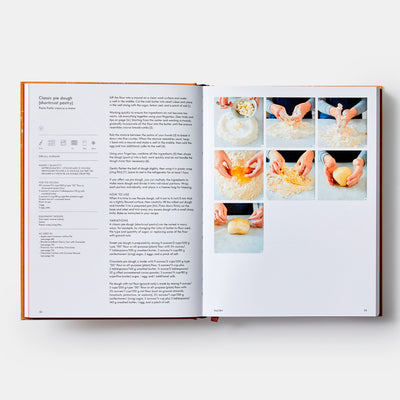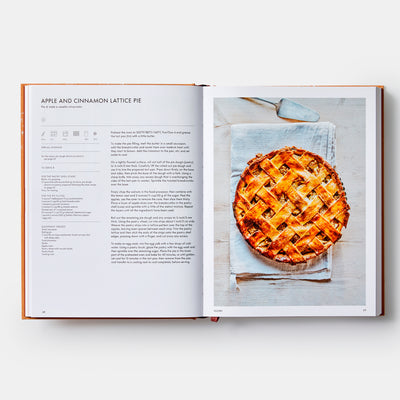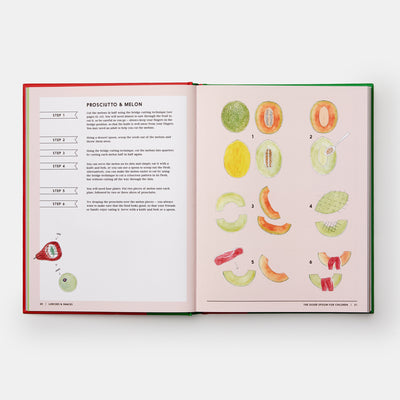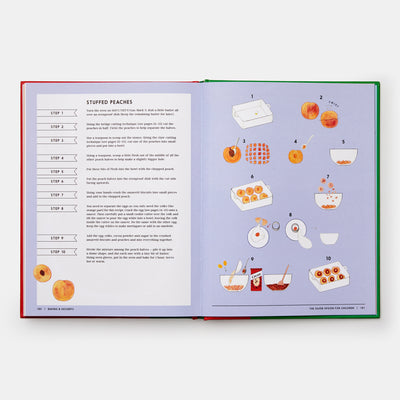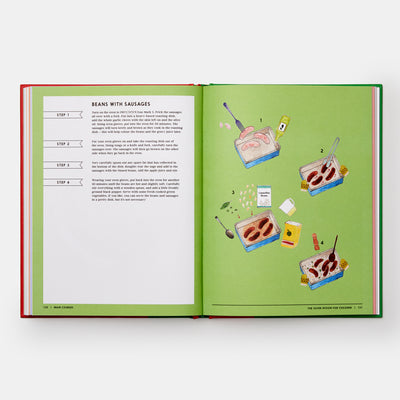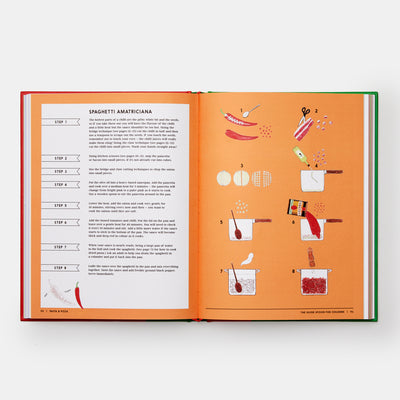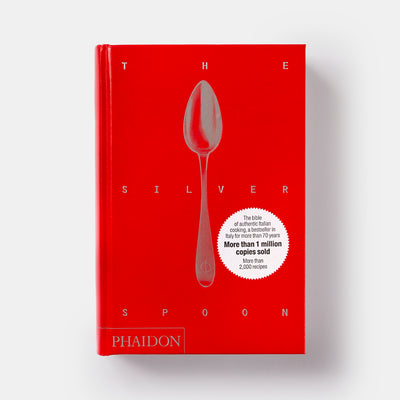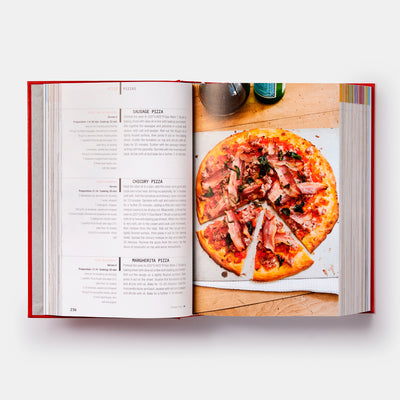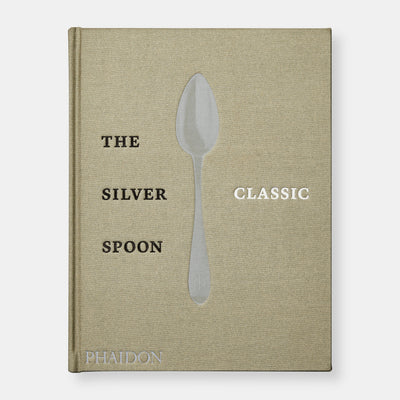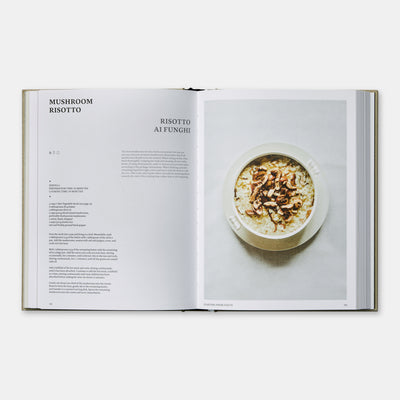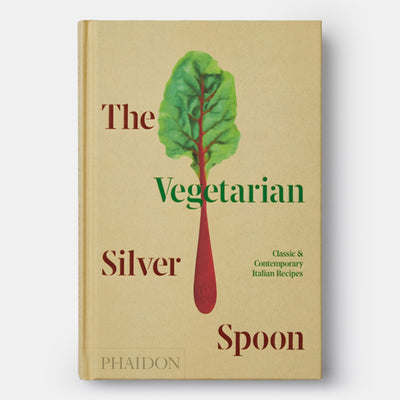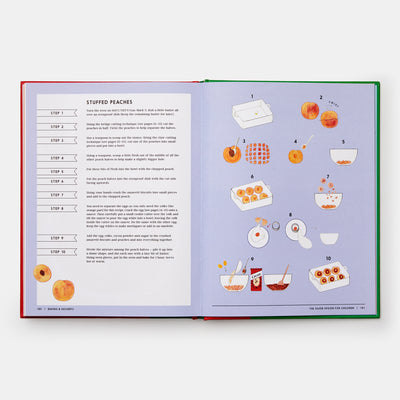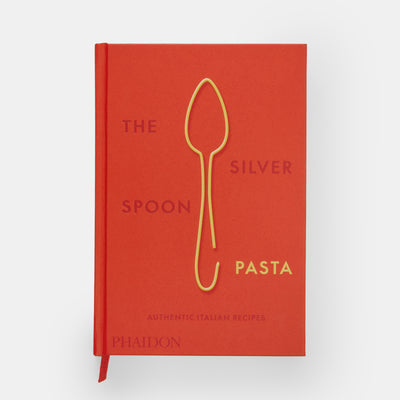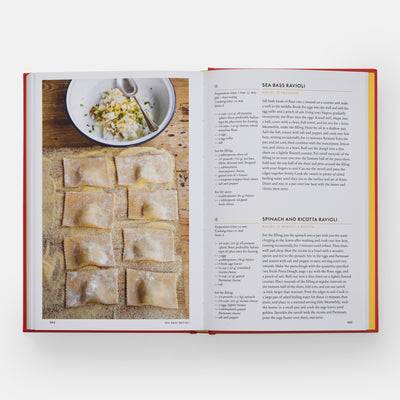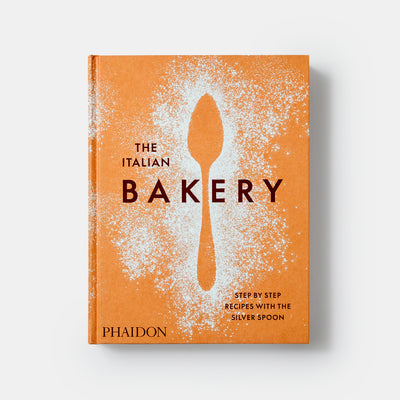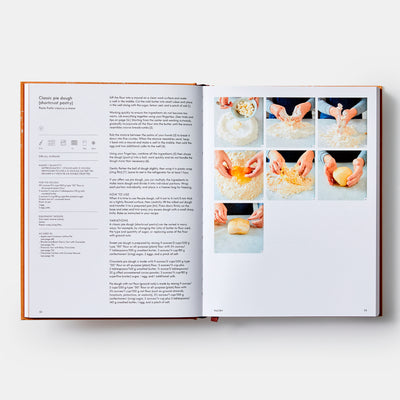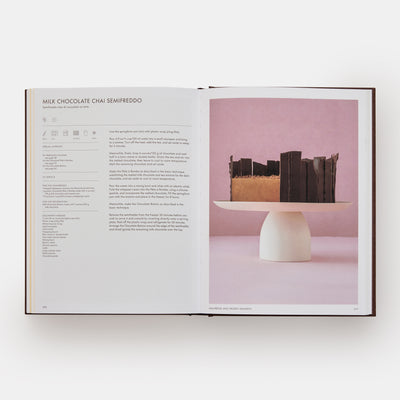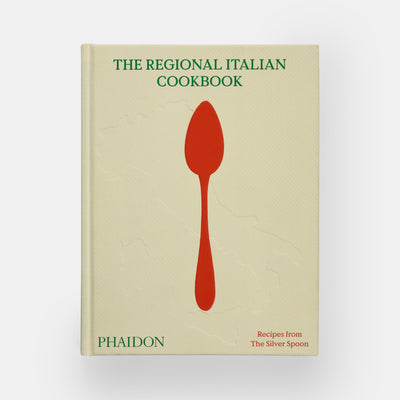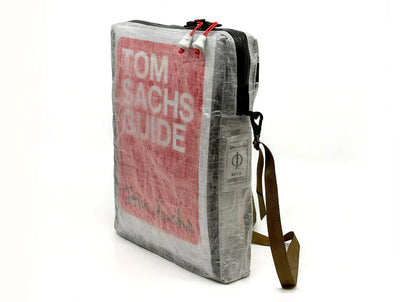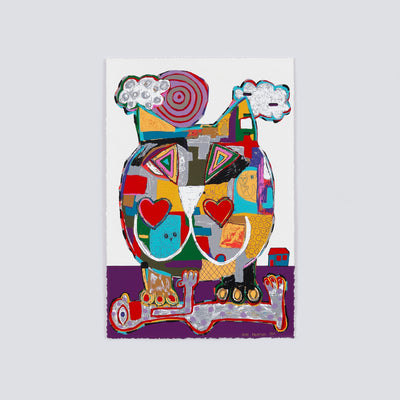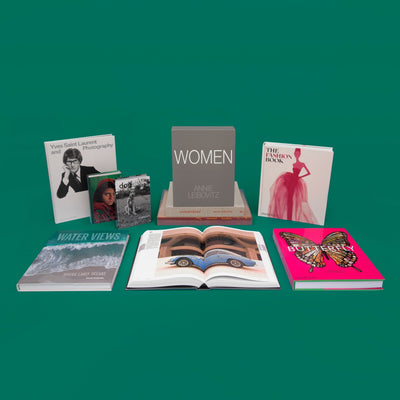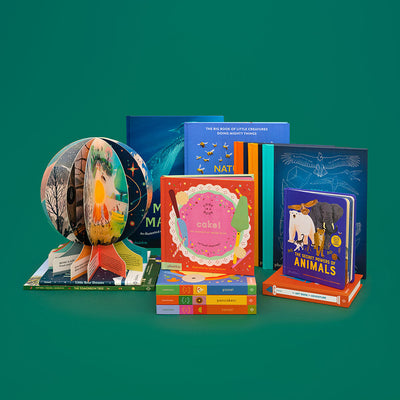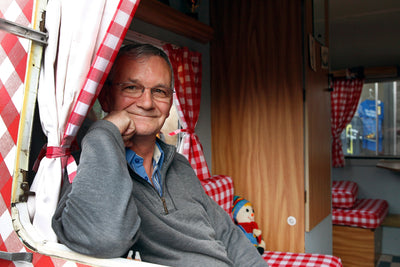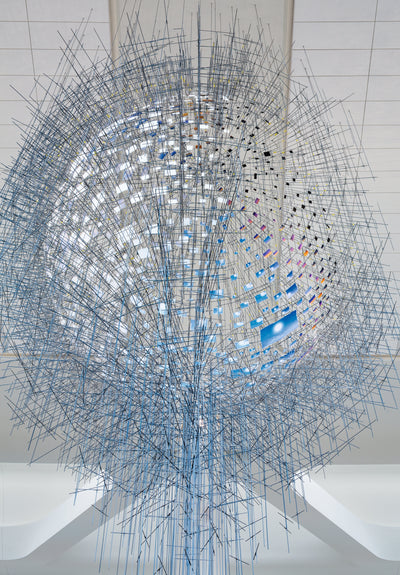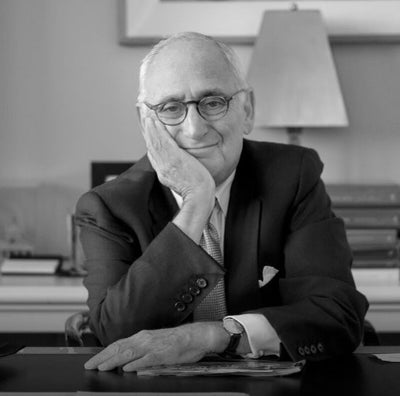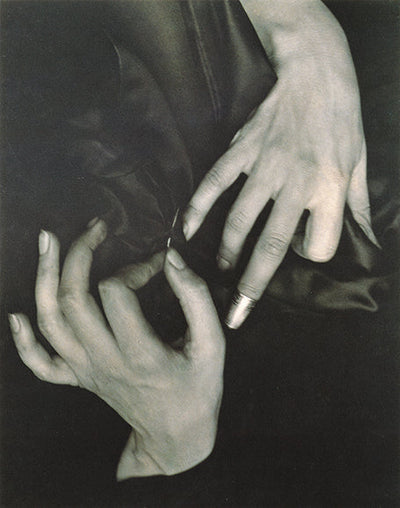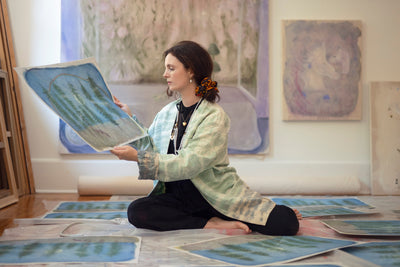Every now and again Derrick Adams creates a work he likes so much he can’t bear to be parted from it. Which, in a way, is good news for all of us. Because what Adams then often does with those works is to make an edition from them. Such is the case with his new Artspace and Monacelli limited edition, Fixing My Face, 2025.
“The original 2021 work Fixing My Face was a work that people really gravitated towards and really liked a lot while it was in my studio. It’s the most recent work that I've kept that I've made a print from,” he tells Artspace.
“A lot of times when I make print editions, they are usually works that are not in circulation, or works that have not been collected, but works that I felt very close to and decided to keep the original in my personal collection. Because I like to share the work, a print edition is the perfect way for me to share something I feel very close to without letting it go.”
Fixing My Face, 2025 is a 21-color silkscreen with aluminum leaf and metallic ink, limited to an edition of 40 signed and numbered prints. The edition reimagines an original painting from 2021, showcasing Adams’ signature approach to figuration with Cubist-inspired angular planes, perspective play, and distinctive colorwork. It measures 20 x 20 inches and is priced $4,000.
“One thing I really loved about this work, that I was really excited about, is the way the subject was both the environment as well as the subject,” Adams says. “So, the figure and the environment on this piece are together, the same. She takes up the whole of the picture plane and she creates a thing where she’s also a portrait and a landscape.”
Fixing My Face, 2025 comes with a complimentary copy of Adams’ first-ever monograph published by Monacelli, which includes 150 of the most significant works from his career, along with four newly commissioned texts from cultural luminaries.
Over the past twenty-five years, the Baltimore-born, Brooklyn-based artist has demonstrated a unique ability to both synthesize and celebrate Black American life and culture in a rigorous body of work. Adams is an avid spectator and stockpiles his observations from pop culture, art history, everyday encounters, and personal history in his art. His work brings the everyday experiences of Black Americans to the forefront, capturing fashionable moments of joy, resilience, and celebration.
Adams has been the subject of solo exhibitions at institutions such as The Cleveland Museum of Art, Cleveland (2022); The Momentary, Crystal Bridges Museum of American Art, Bentonville (2021); and the Museum of Arts and Design, New York (2018), among others. Opening in April 2026, Derrick Adams: View Master at the ICA Boston will present his first mid-career survey, offering a sweeping view of his multidisciplinary practice.
We asked Derrick Adams about Fixing My Face, 2025 and how it fits into that practice.

Derrick Adams - Fixing My Face, 2025 - photography Garrett Carroll
Can you describe Fixing My Face, 2025?
It's an image of a female figure looking at herself in a mirror where she's multiplied, but she's also extracted or abstracted in some ways, because one is looking at the viewer, and the other one is looking at herself. And then at the top [on the original painting] there’s a little small silver reflective surface, that is almost like a mirror that you can see your reflection in as a viewer.
Sometimes I may not necessarily realise why I’m drawn to a work at the time I made it or the reason I kept it but that's also the intrigue of why I like it. It’s more intriguing for me to try to sit with it and to spend more time with it, to find out what about it I like so much that I felt compelled to keep it.
‘Fixing’ your face can mean grooming, makeup, preparing yourself for public gaze, or adjusting one’s appearance to align with identity or expectations. It carries connotations of transformation and self-care. Which is it for you?
Presentation is everything. I think that a lot of times just as individuals, we can't help but be concerned with the idea of representation or presentation or public / private being seen, or the idea of being visible or being invisible.
I think this particular piece talks about different ways of looking at something, even yourself. A lot of times titles come after the work is done, but it was really about looking at yourself in multiple perspectives. And so when I decided which work did I want to make or create as a print edition to me this work really amplifies a lot of things that are really part of my practice and the way that I work.
All the work that I make, within this language of painting, always has a sense of the subject, the figure, and it's an environment around the figure that really helps to inform the animated quality of the figure that is in the front of the space. And this is one of the few works that I've made where it's a really micro perspective of the figure being blown up and being exaggerated or even amplified as the subject and the environment.

Derrick Adams - Fixing My Face, 2025 - photography Garrett Carroll
Is there one aspect – color, shape, emotion, in Fixing My Face, 2025 that you think does the heavy emotional lifting, even if viewers don’t perhaps consciously notice it?
Fixing My Face, 2025 almost exists as a hard-edged abstract painting, with some level of figuration that creates the figure. But generally, for me, it has a very strong abstract presence when you're looking at it from a formalistic perspective, and that's what I think drew me to this piece a lot. It has a lot of geometric formations that establish the figure without any particular background that is alluding to a space outside of what you're looking at. So it's really a close up of the subject where she is taking over your complete view.
In general, there are certain things in my practice, that have a level of simplicity but that take a lot of planning and strategy to create. If people are not really paying attention to the way that things are constructed, they might miss a lot of the nuance that's happening within the work where things are both operating on verticals, horizontals - all kinds of different things that are happening together in a really color blocked fashion.
The side and head on imagery affords the work a pleasing geometry. What do the angles of the figure, and their implied relationship, mean to you?
Yeah, completely. One thing I really loved about this work, that I was really excited about, is the way the subject was both the environment as well as the subject. The figure and the environment in this piece are one in the same. She takes up the entirety of the picture plane, creating a composition that is both a portrait and a landscape.

Derrick Adams signing Fixing My Face, 2025 - photography Nir Arieli
The edition feels like one of your most drilled down works and one of your most private.
Oh yeah it is. It definitely is more minimal in a lot of ways than some of the work. The work that was created in that series is definitely much more stripped down and minimised compared to other things.
What do you think prompted this minimised approach back in 2021?
It happens sometimes. I must have been working on some works that were pretty dense and had a lot of detail and environment in them. And so that probably ended up being like a need to minimise what is next to these things. And to create something that can hold the same amount of attention in space, by challenging myself as I try to do in my studio, daily.
So I think that painting, also is very simplistic in the way that it removes the idea of the environment as traditional sense. It can definitely be placed next to something that is completely dense and still hold the same amount of visual interest because of the way that it's equally considered.

Derrick Adams - Fixing My Face, 2025 - photography Garrett Carroll
How would you like this piece to age? Is it timeless or rooted in 2021 for you?
I always envision my work being for the future generation. I always think that the work I make is not really even for the generation who experience it now. I don't have a linear perspective of how to look at my work based on a more didactic or more overly structured lens of engagement. What people see may be part of the ingredients, but not necessarily the main ingredient.
So obviously, because I'm a black artist if I'm creating a subject, it's going to be somewhat reflective of who I am as a creator. And also, as an artist, a person who paints, I'm also going to be equally interested or even more invested in the formal execution of what I'm doing, because I'm also trying to make a great painting or a strong painting that has all the formal elements that will hold the viewer's interest as a painting.
And so I'm thinking about many different things that create this work. But I also allow that freedom of discovery. I'm making it to be part of the experience of the viewer, because I want the viewer to also experience discovery when they're looking at my work and not necessarily feel like my work is exactly what the label next to it is saying.
I really want people to see what's happening beyond the description of what it is based on their visual engagement with the work. I think that a strong work extends beyond the confounds of the label or even the description that is written by the artist if you are standing in front of it as a viewer.
So I'm always thinking about and hoping that the work will exist beyond or exceed the expectations of myself as the artist to connect with the viewer in a way that is on those terms.
Some people might be coming for color. They might be coming for form. Some people might be coming for content. I'm hoping that I'm able to capture all of those important elements of concern by the viewer, because I'm concerned about those things as well when I'm making art, but I'm not focussed on one particular thing more than the other.

Derrick Adams signing Fixing My Face, 2025 - photography Nir Arieli
Do you ever wonder what questions will people in the future ask about your paintings?
That’s one of the things I think about a lot. I want people to know in the future that there was an artist who, regardless of what's happening in society - that may be challenging or oppressive or just distracting - that I maintained a level of fantasy and fun and complexity through the material while also acknowledging the state of society but being presented in a way that gives the viewer a level of hope and normalcy when experiencing that work.
I think about what people need to look at or experience that will give them a sense of pleasure or a sense of entertainment in some ways, because art is a form of entertainment, but also empowerment sometimes.

Derrick Adams - Fixing My Face, 2025 - photography Garrett Carroll
The Monacelli monograph that accompanies this edition organises your themes into 'Channelling', 'Signalling', and 'Mirroring'. What inspired that manner of grouping?
I really didn't want it to be based on years. I feel like I go back and forth all the time to things I've made in the past revisiting those things. I haven't really moved on or moved away from ways of communicating in the past. I may have revisited different techniques or different approaches to communicating, but I still look at the past as a form of revisiting ideas and different transformative ways.
So ‘Signalling’ for me was about letting people know that, to look at this, look at this again. it's really about that. Look at this thing that you may have not thought to look at more closely.
And the ‘Channelling’ part is just talking about things that I'm absorbing from environment. But things that I'm bringing. I am like a vessel or some conduit or facilitator.
Once people are paying attention to the signalling, the ‘Mirroring’ part is like looking at the reflective nature of what you're seeing, how it is brought back to you as a viewer to pay attention to this thing that I've now told you to look at, that you may have not looked at. Now look closer at it to see yourself in it, and to see what it's projecting back out to you that may not necessarily be literal, but that has signifiers that allude to other things that, as a human, you can connect to if you're really looking.
So those things became a really important part of putting the book together, really causing me to ask the question: what does all this work really mean to me?
What is this work saying for me as the artist, looking back at it, and the way that people have responded to it, and how it's been written about, conceptualised by some people, curated into shows based on themes, all these ideas were used to categorise the work that’s in the book.

Derrick Adams holding his Monacelli monograph - photography Nir Arieli
How important are editions to you personally and within your practice?
Doing editions, especially with works that I feel very close to, creates this idea of community, a community of like-minded people who see what I see in the work or more.
Normally when artists are making works that are unique works, if it's collected by an individual, that's one work that people may not ever see, because it's in someone's home or in a private building. That happens a lot for artists at a certain point. People buy your work and then it might be a work that you love, but it might be a work that only the person who bought it will see.
Editions to me really offer an opportunity for people who really love art, who really think about art. And art, in its purest form, as a thing to share with people is for people to experience.
I think print editions give that concept more emphasis because of the shared community aspect. It is still a limited amount, but the people who want it understand that the image is compelling enough that it could be shared with other people.
Take a closer look at Fixing My Face, 2025 here.
